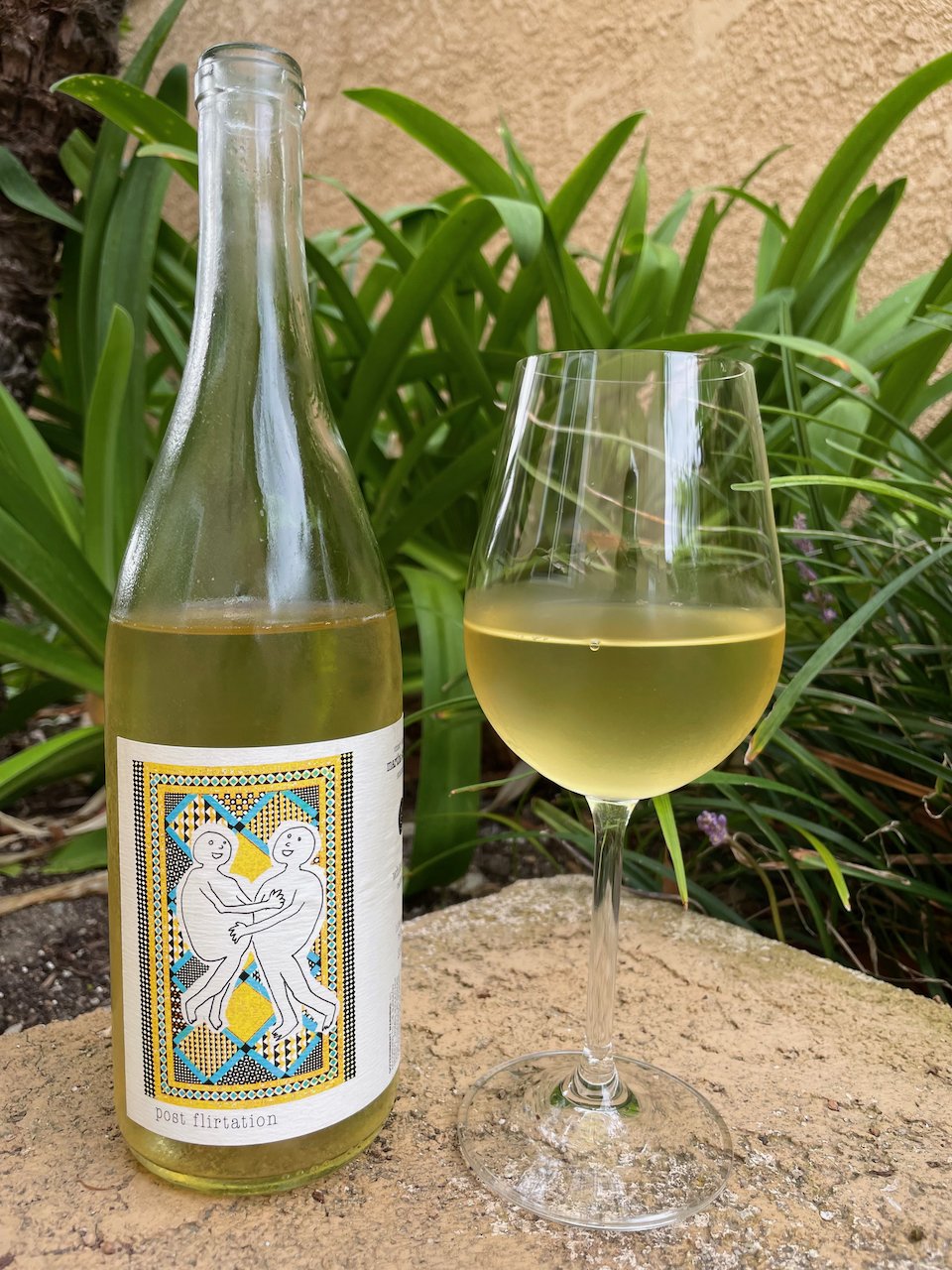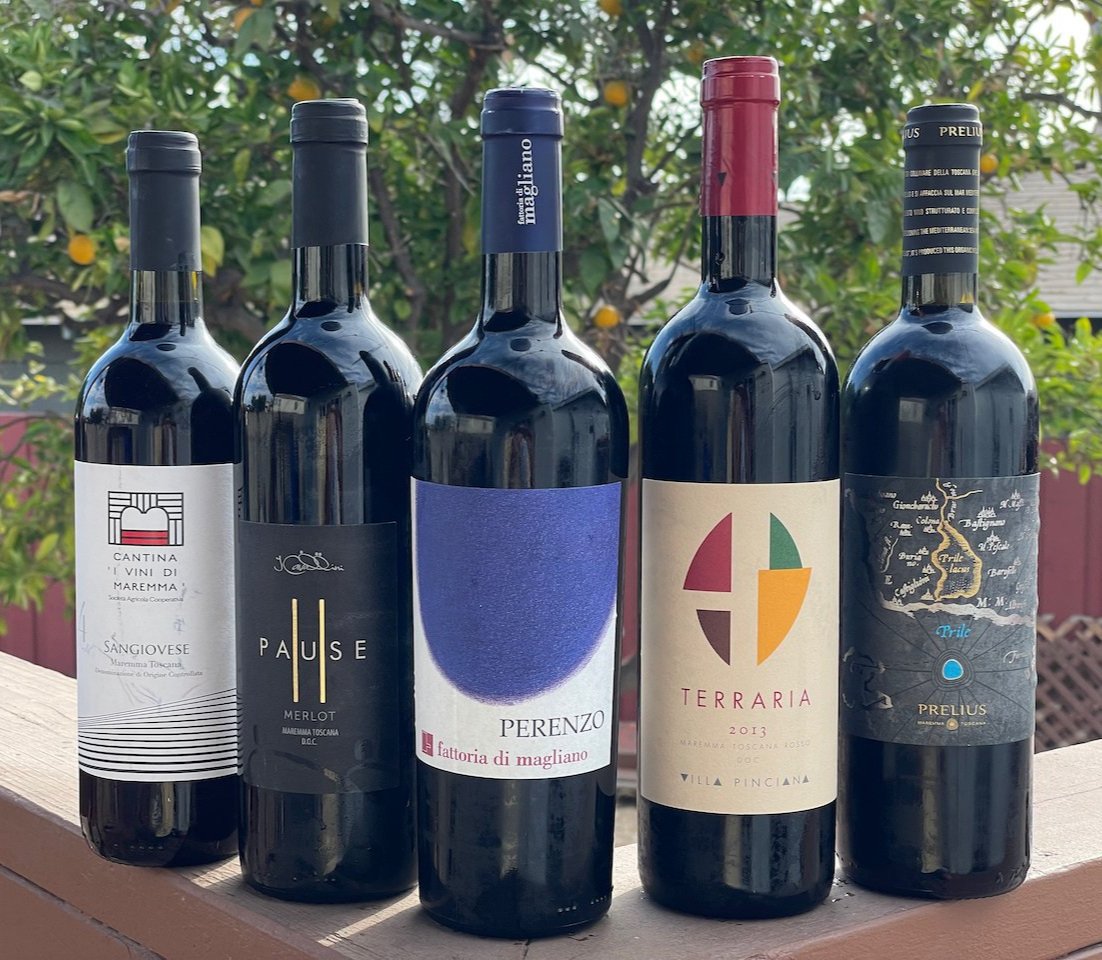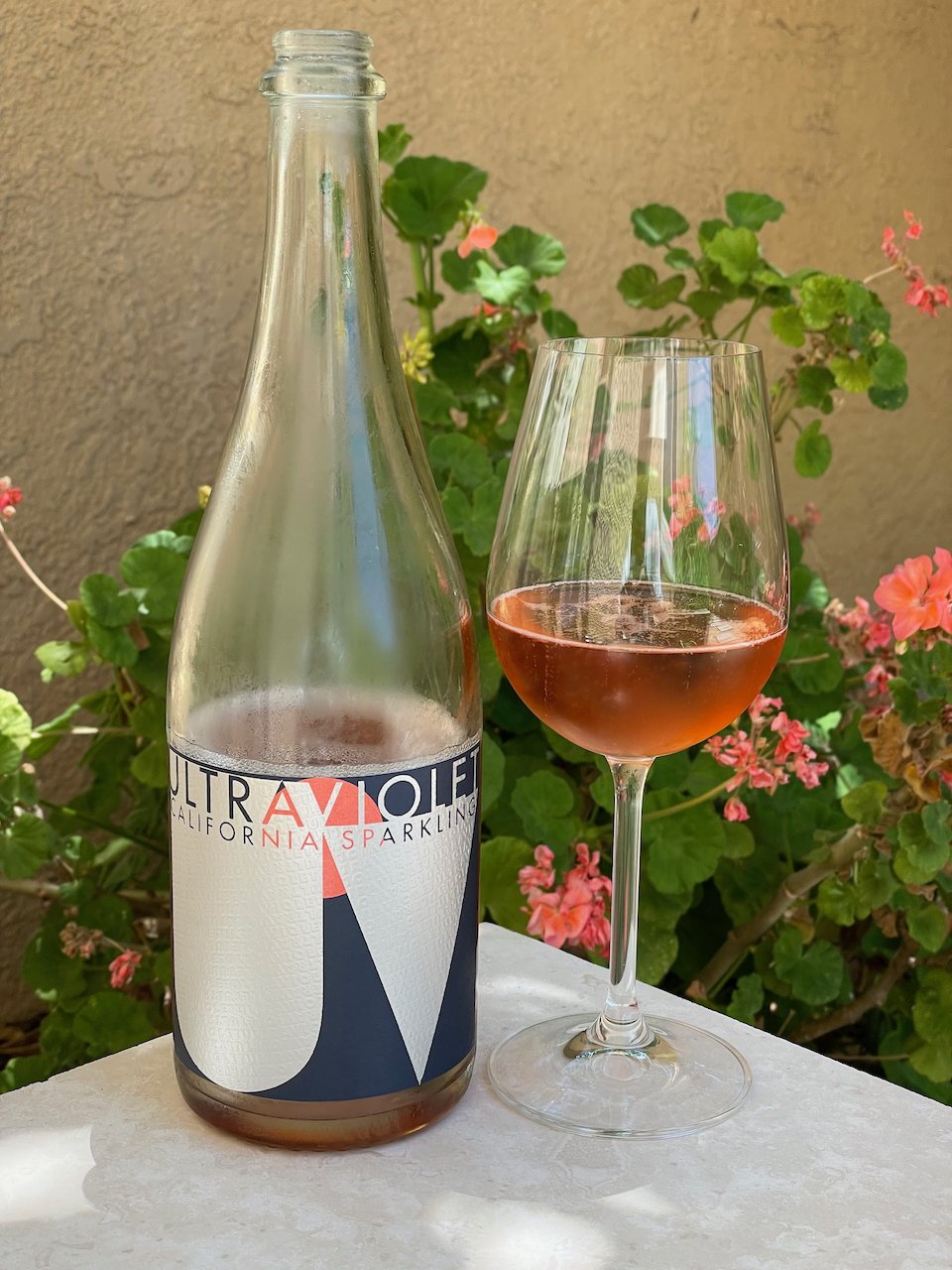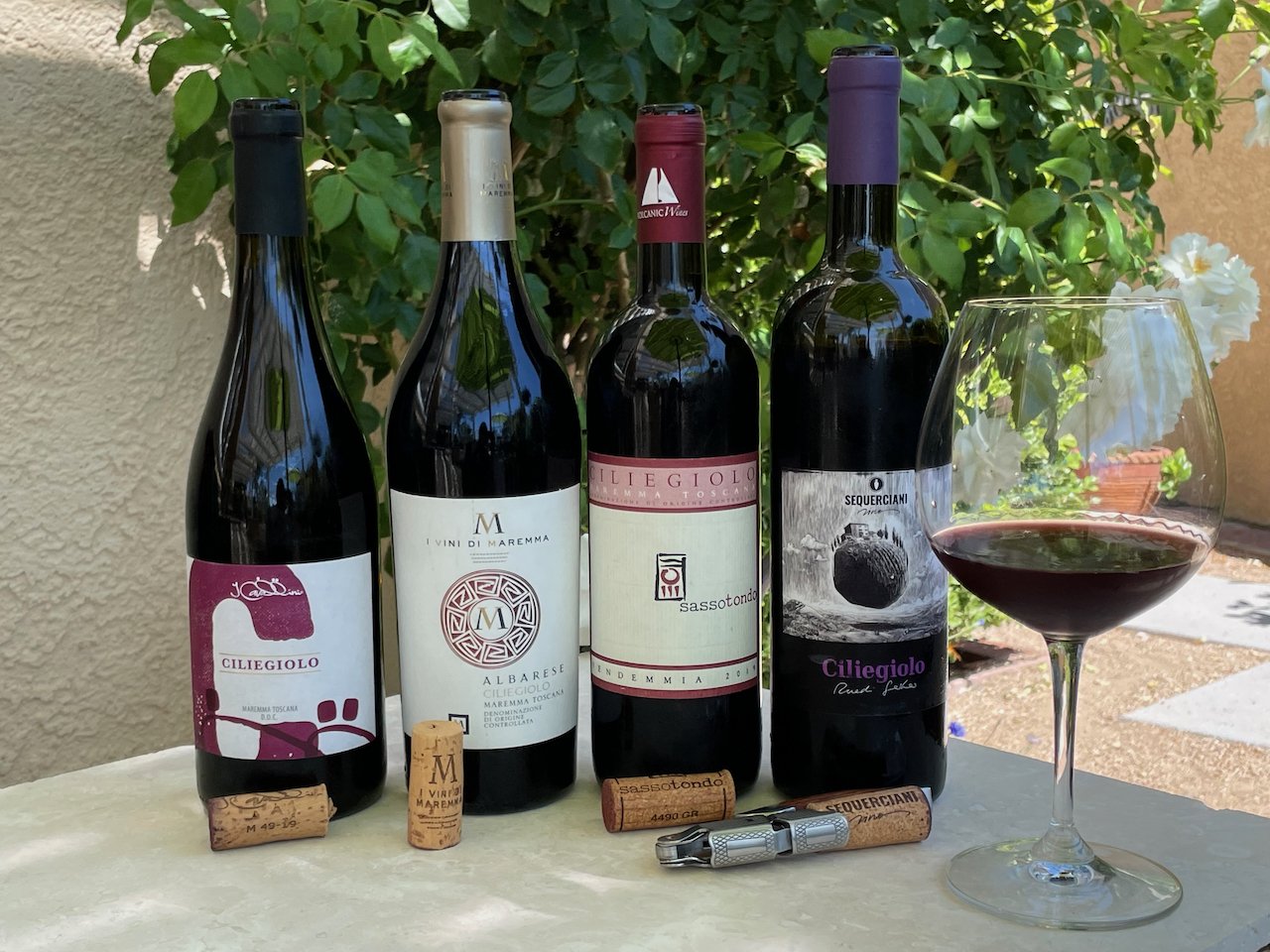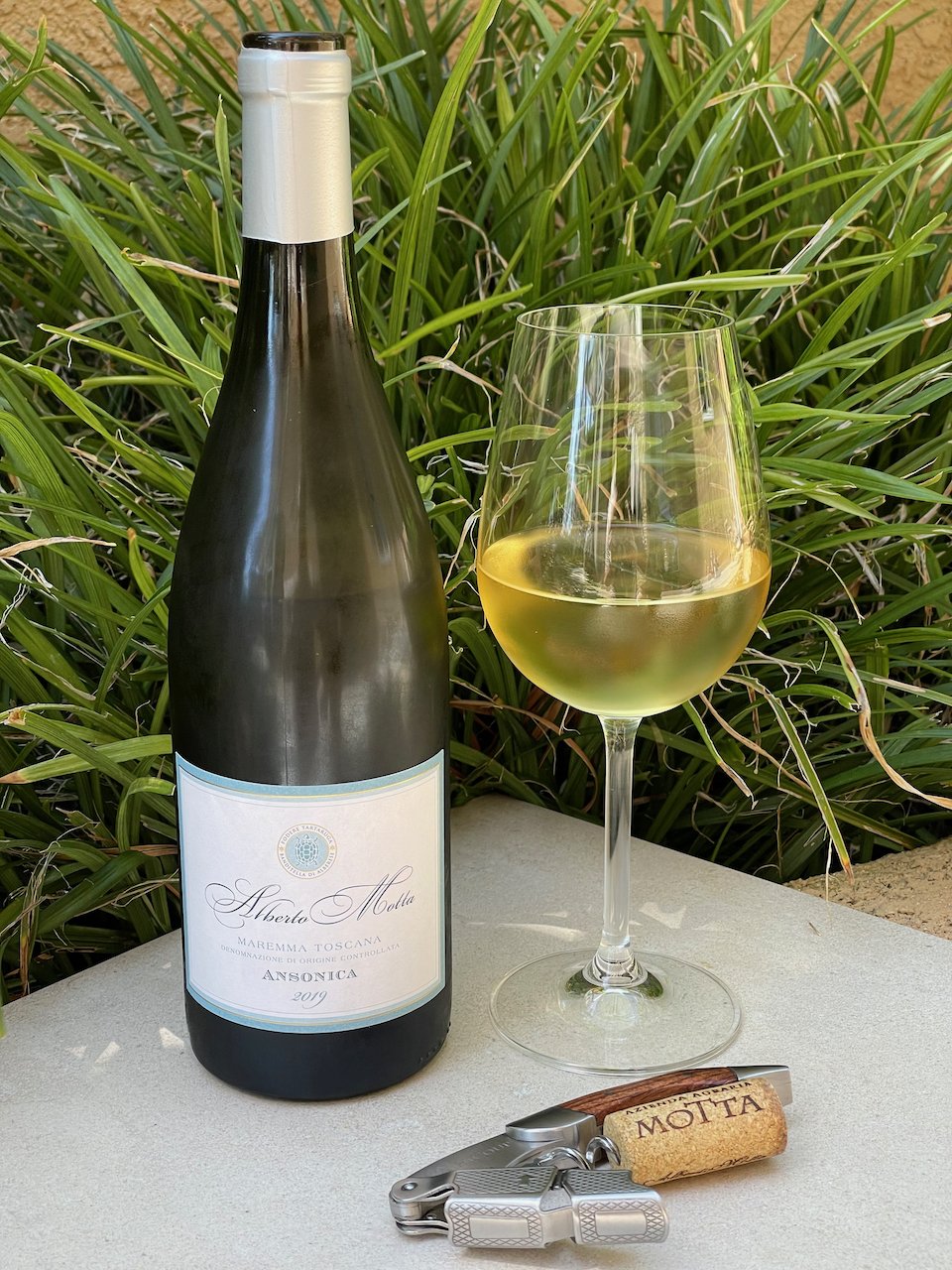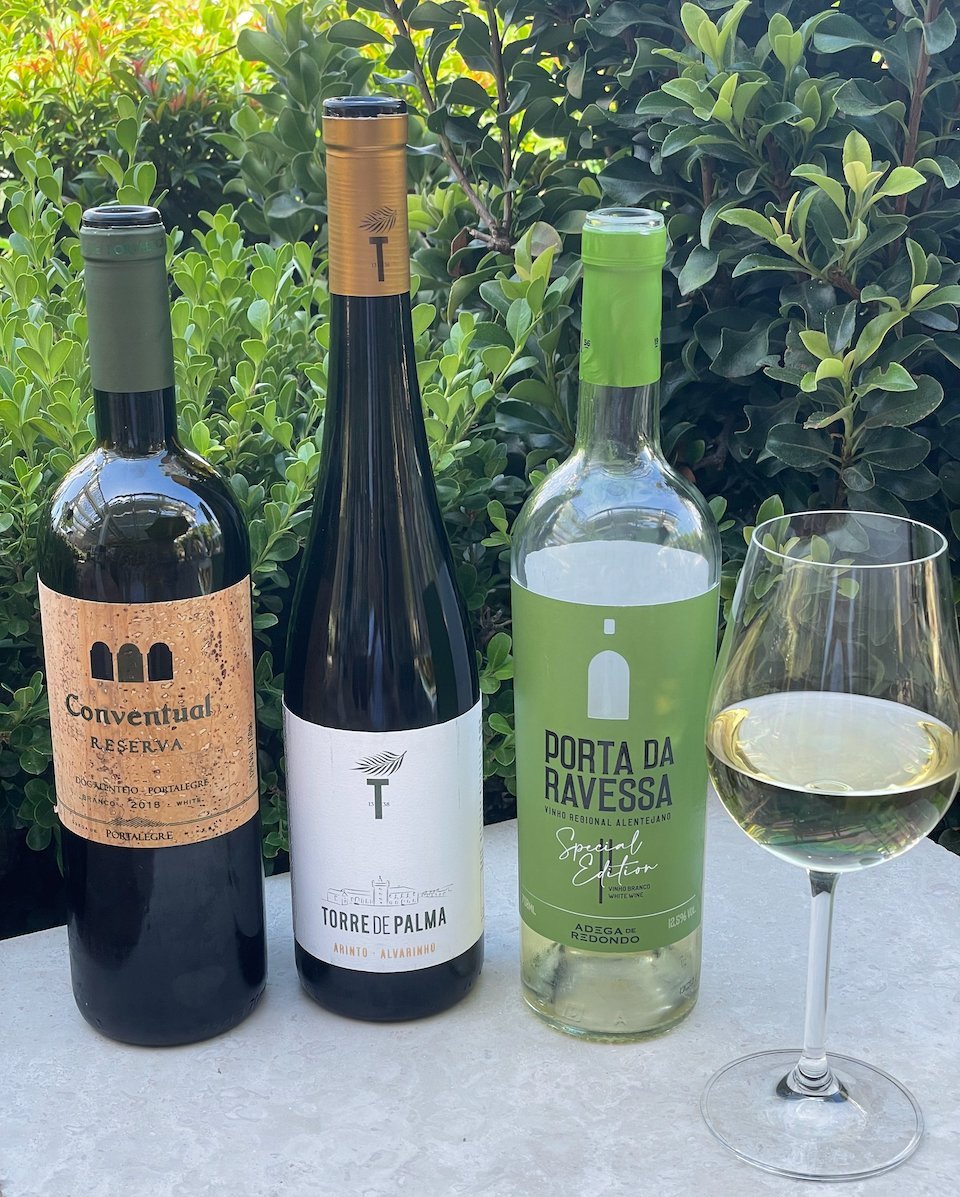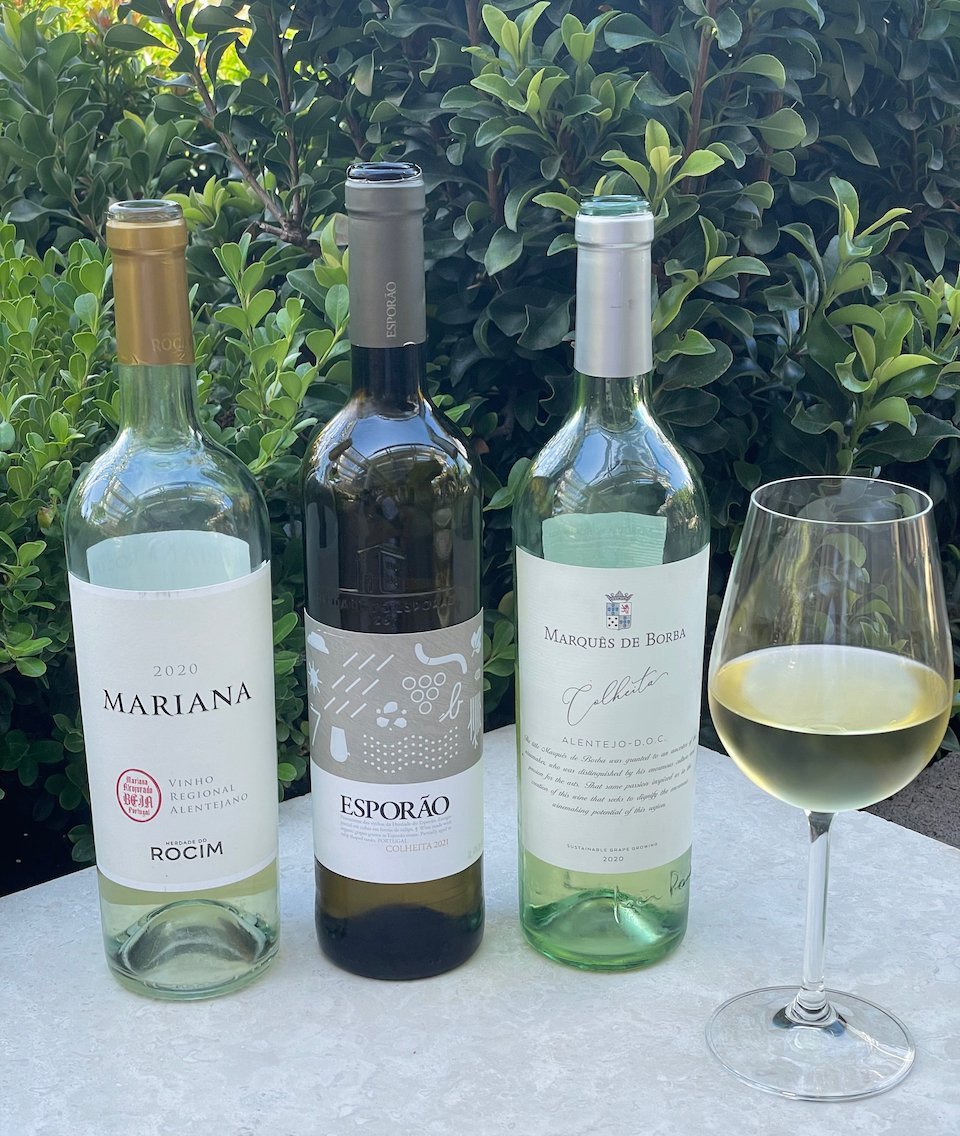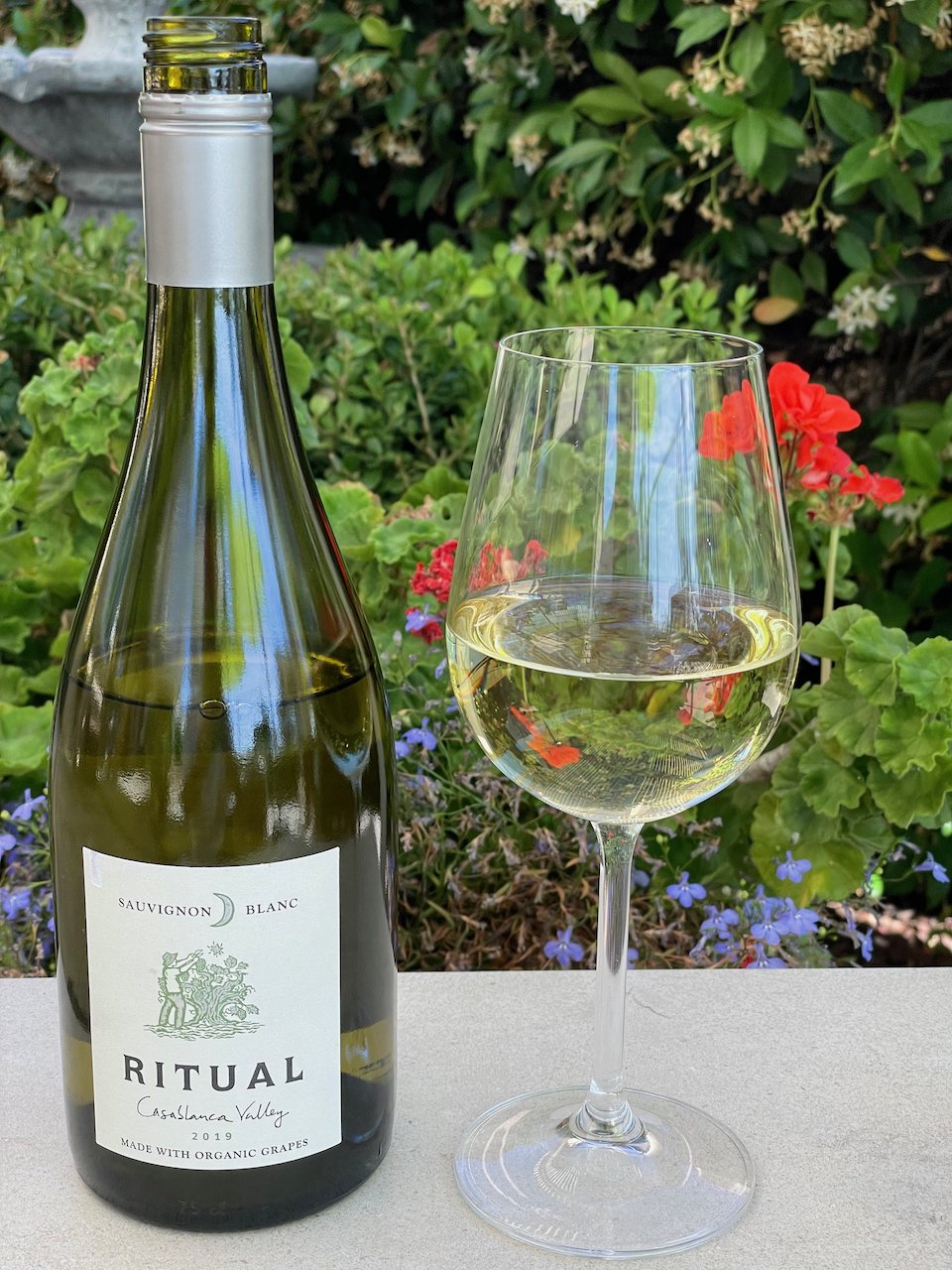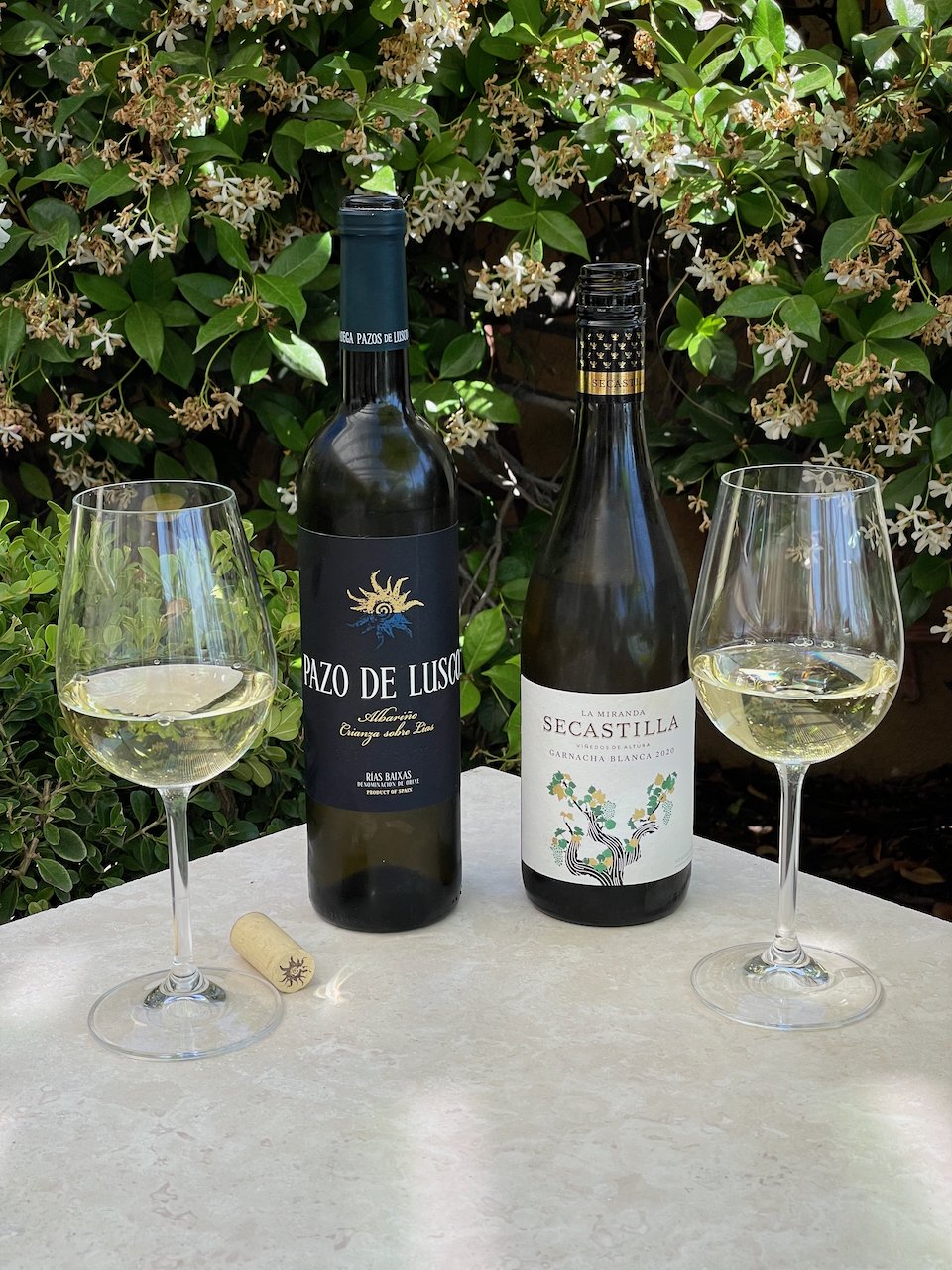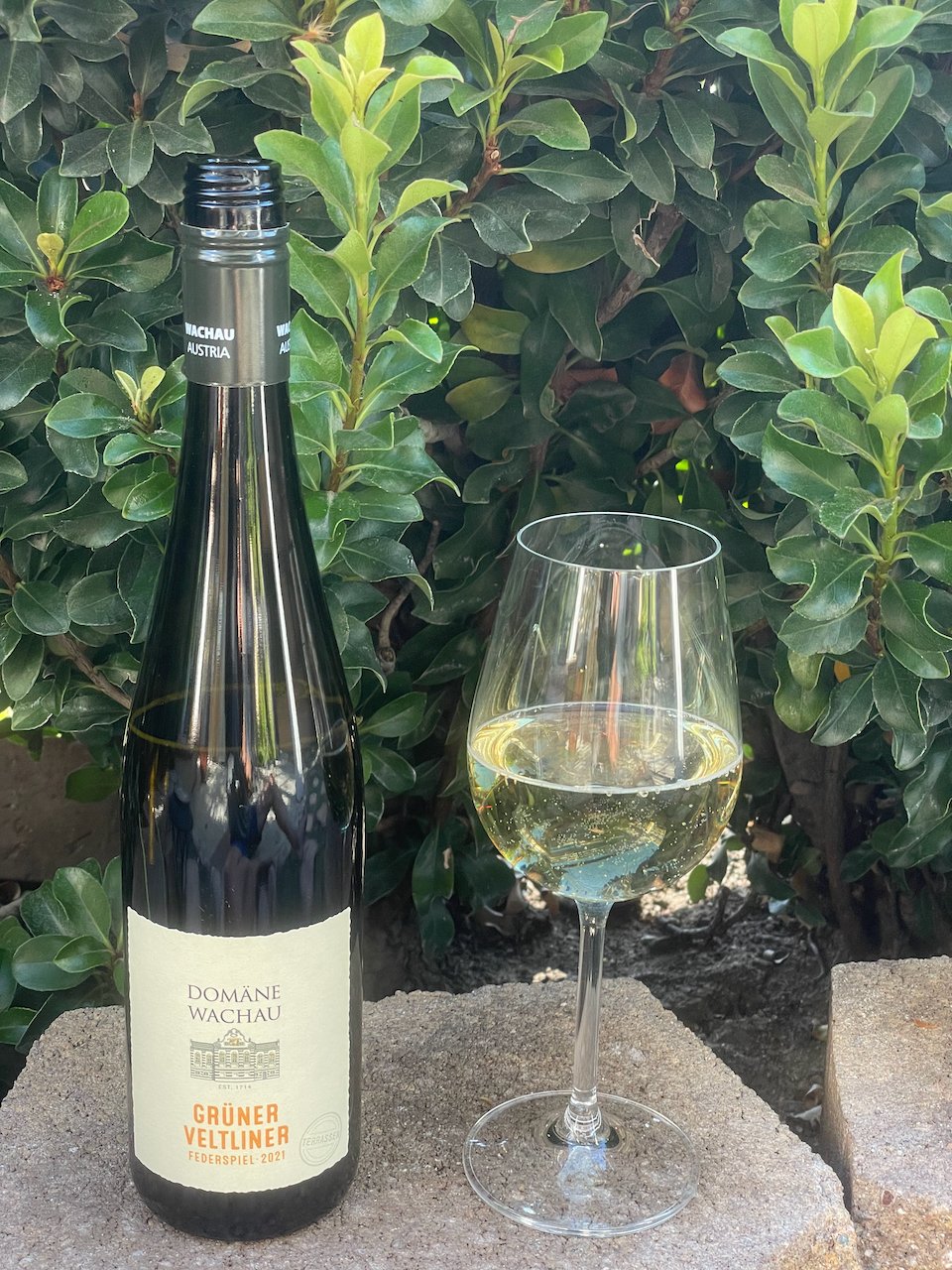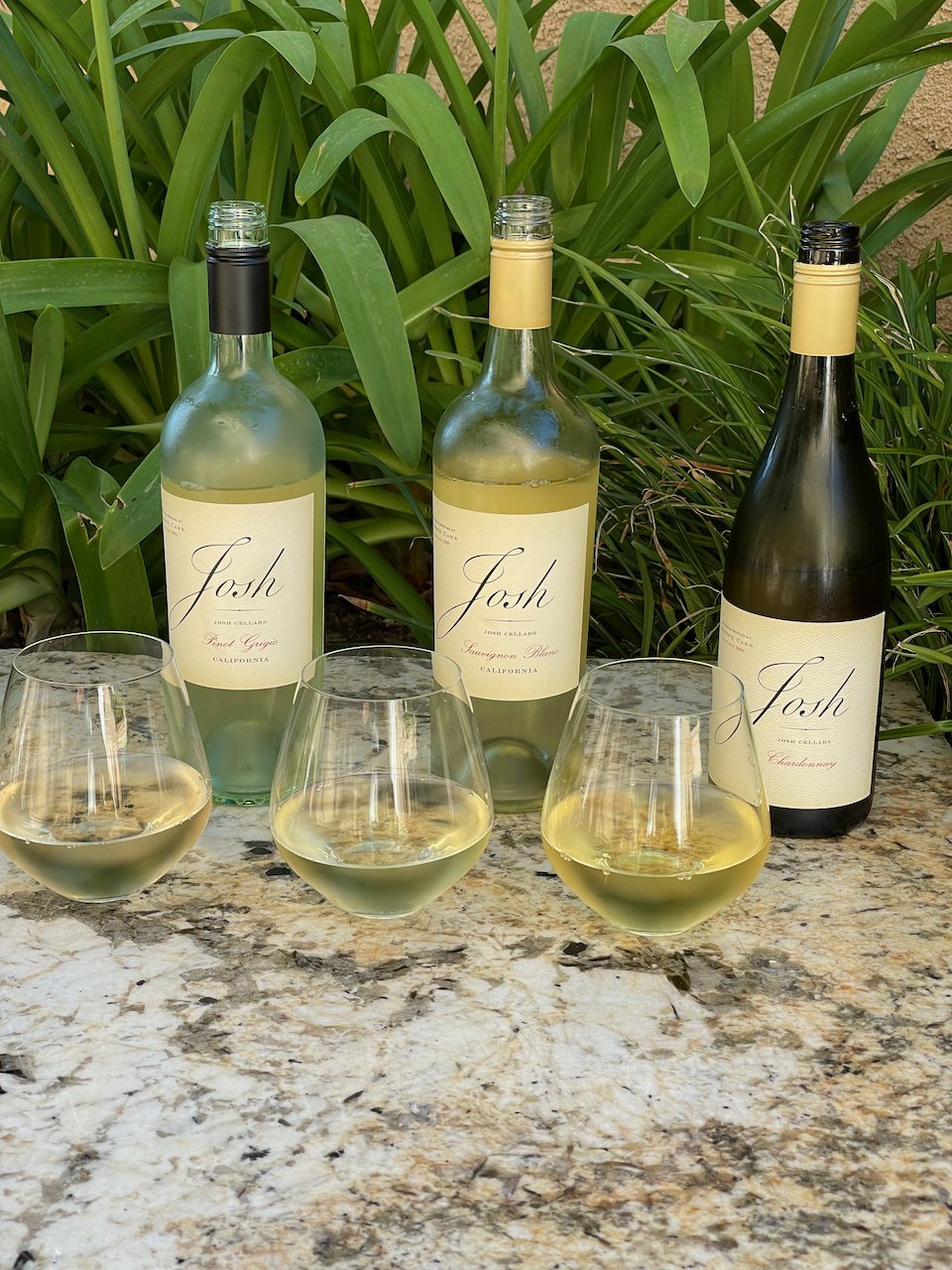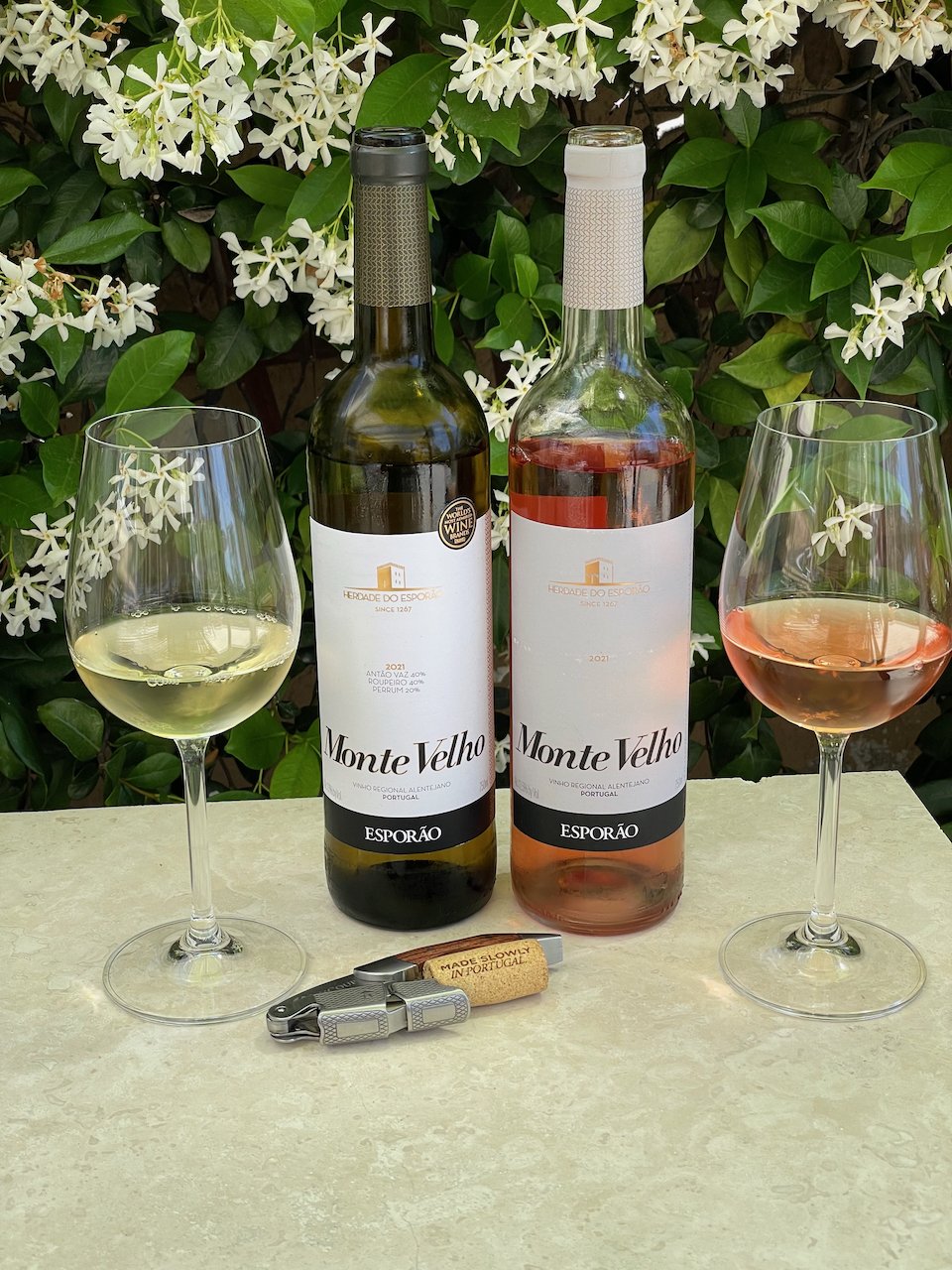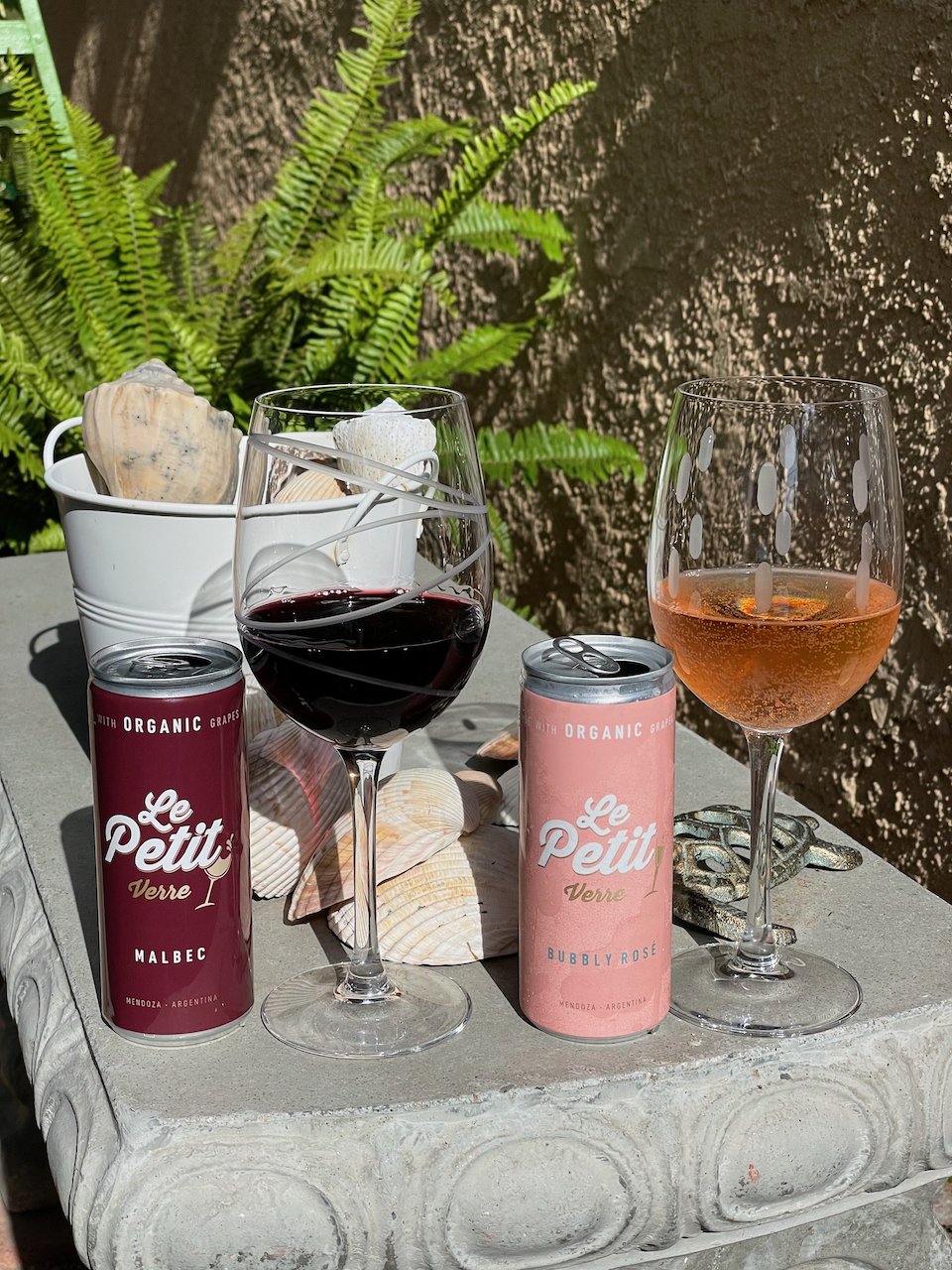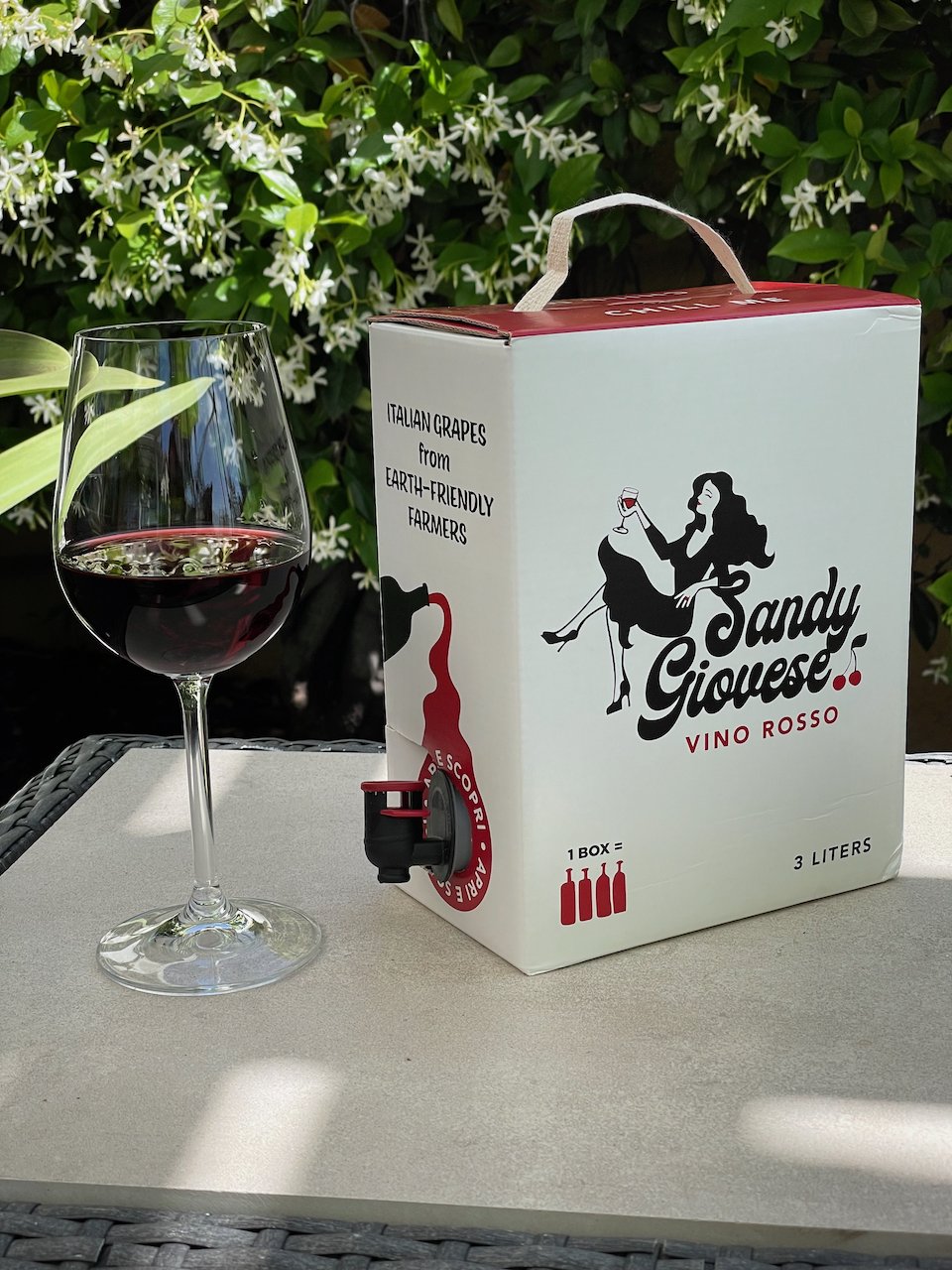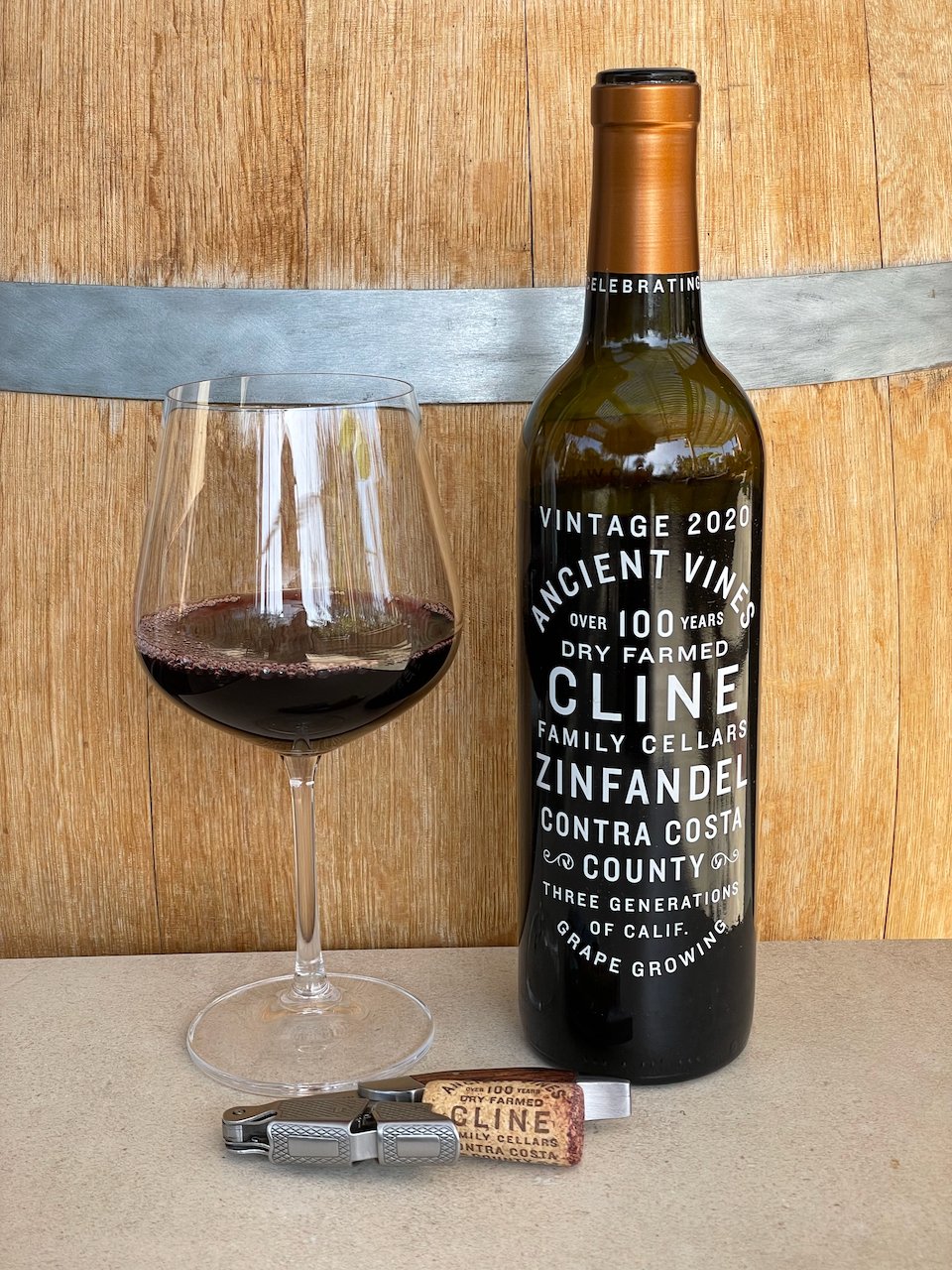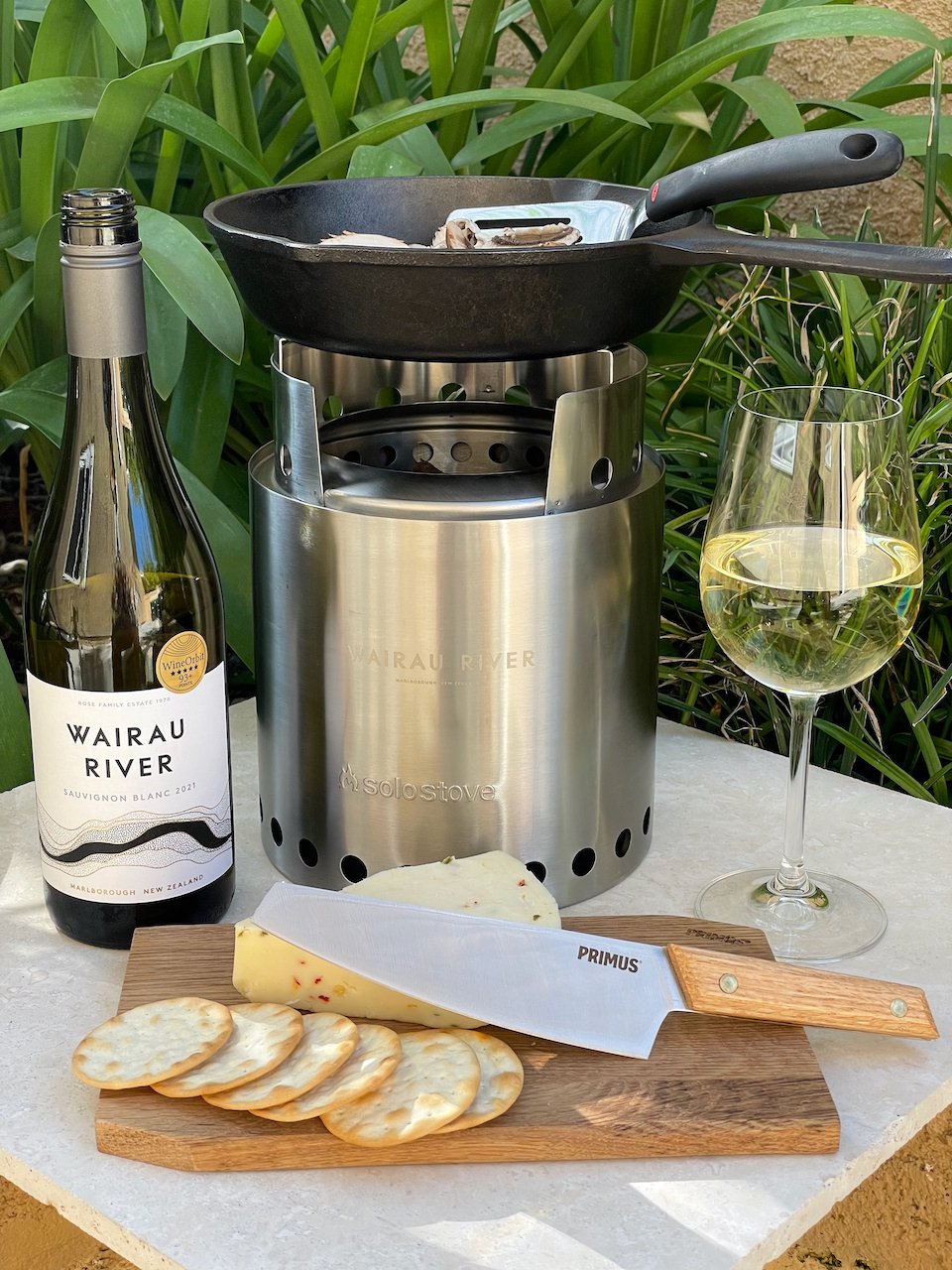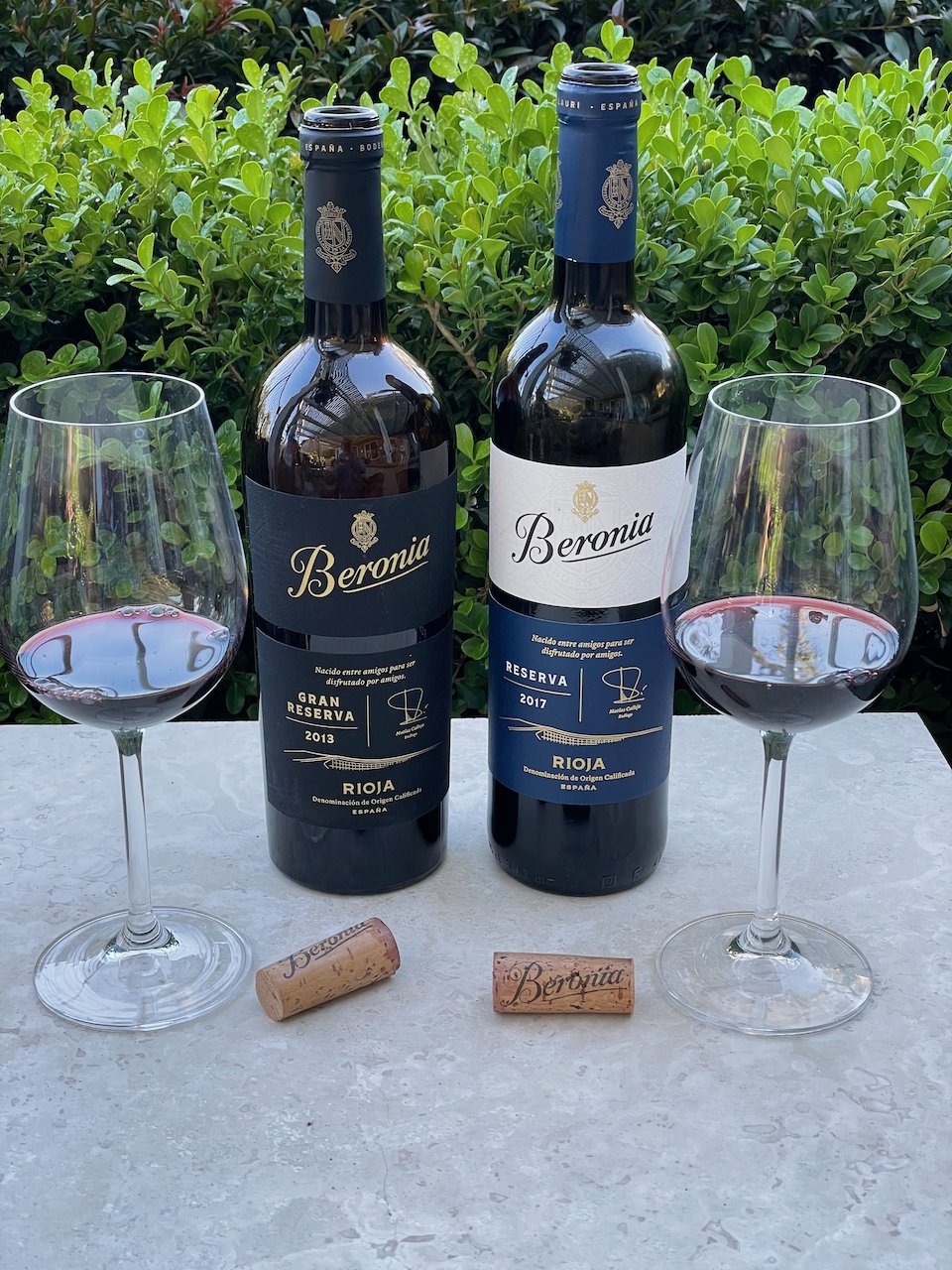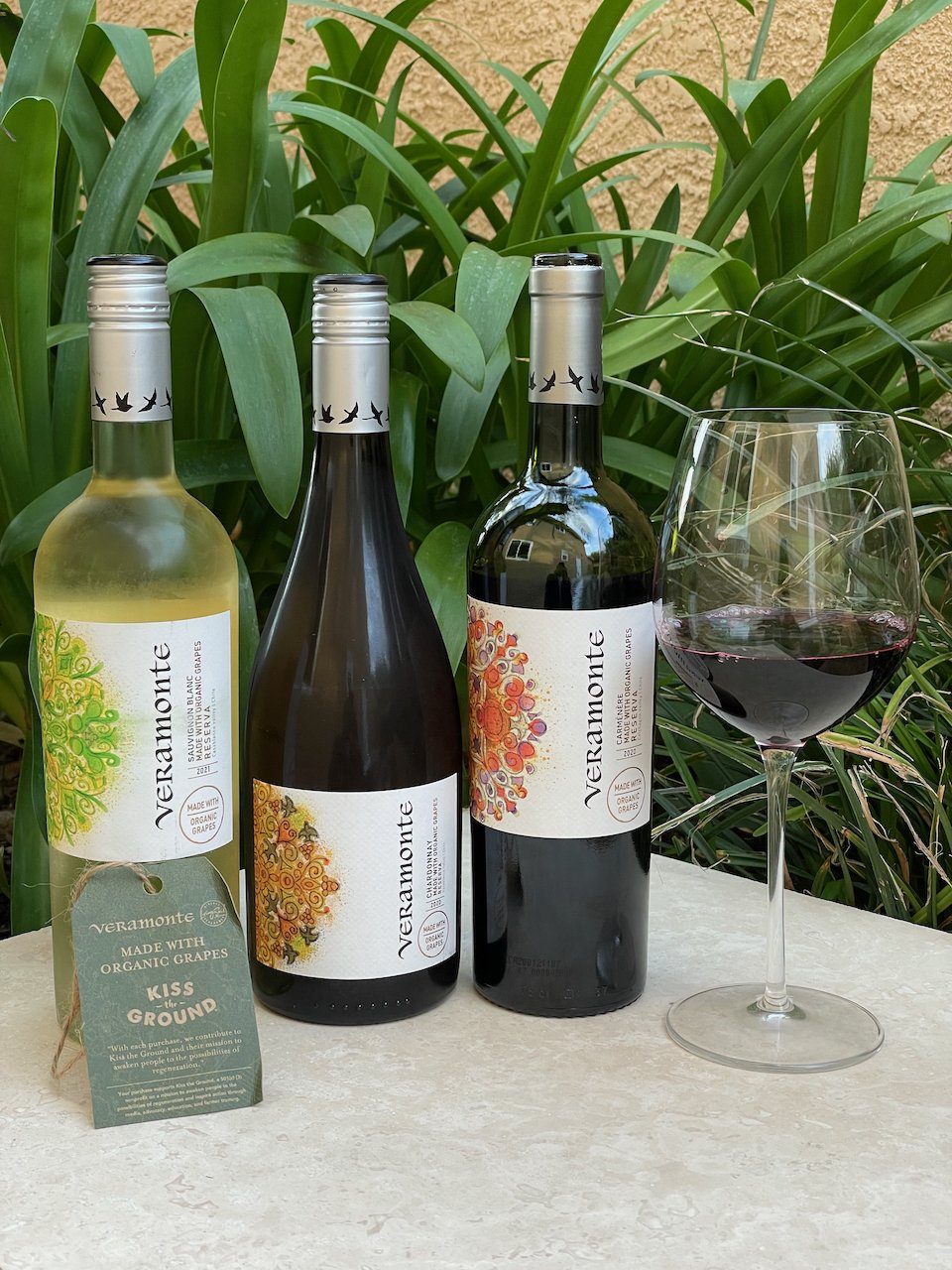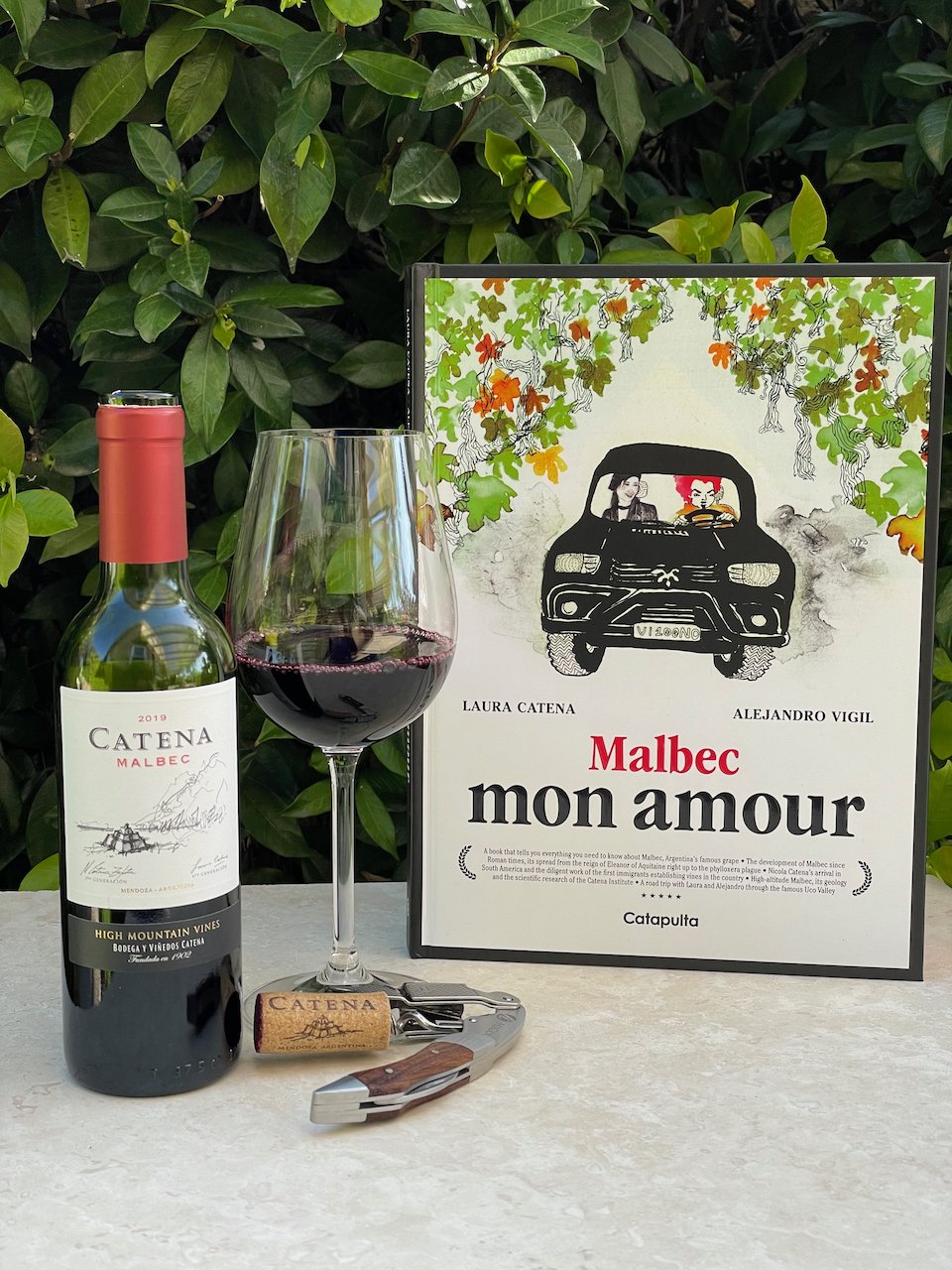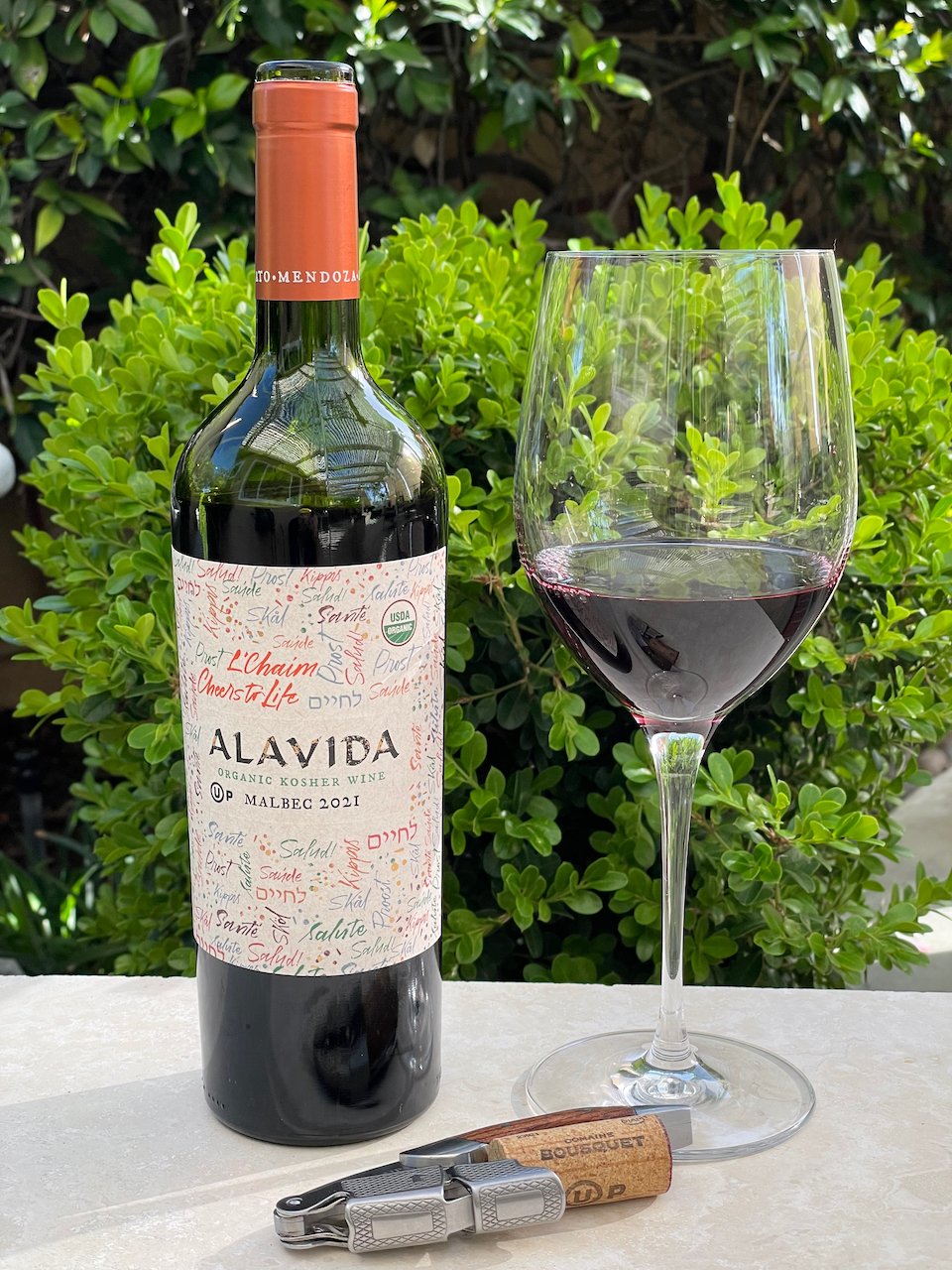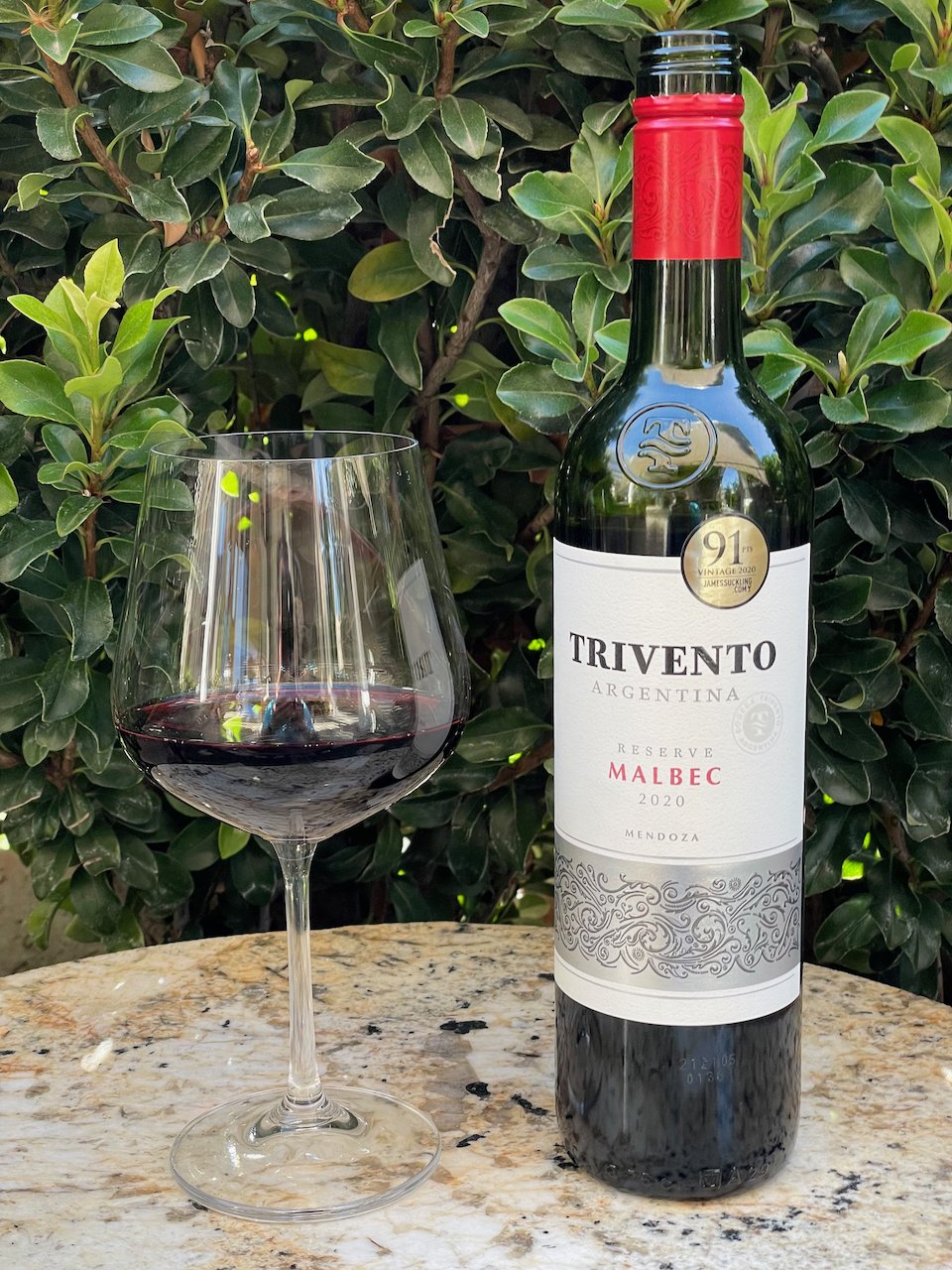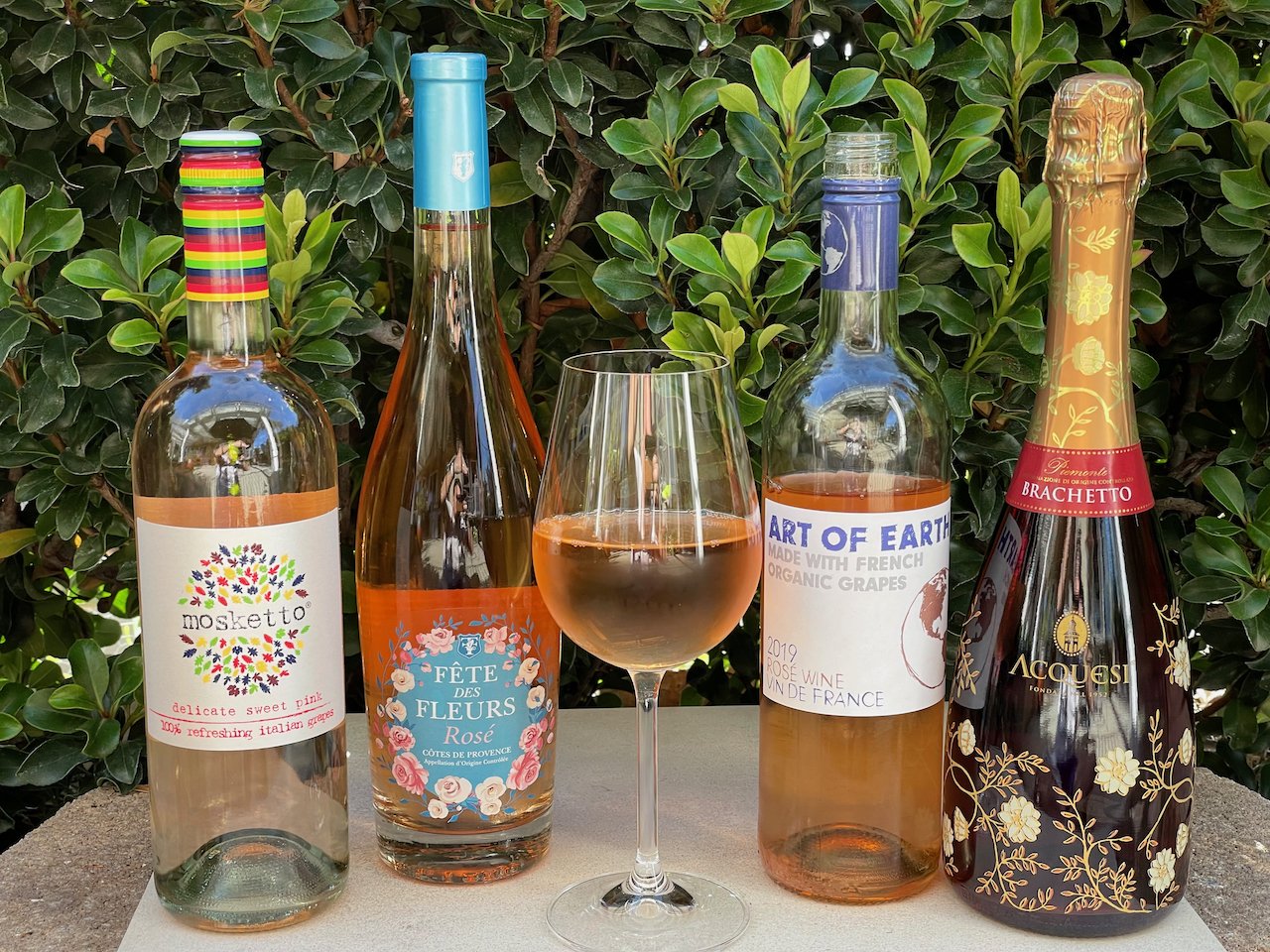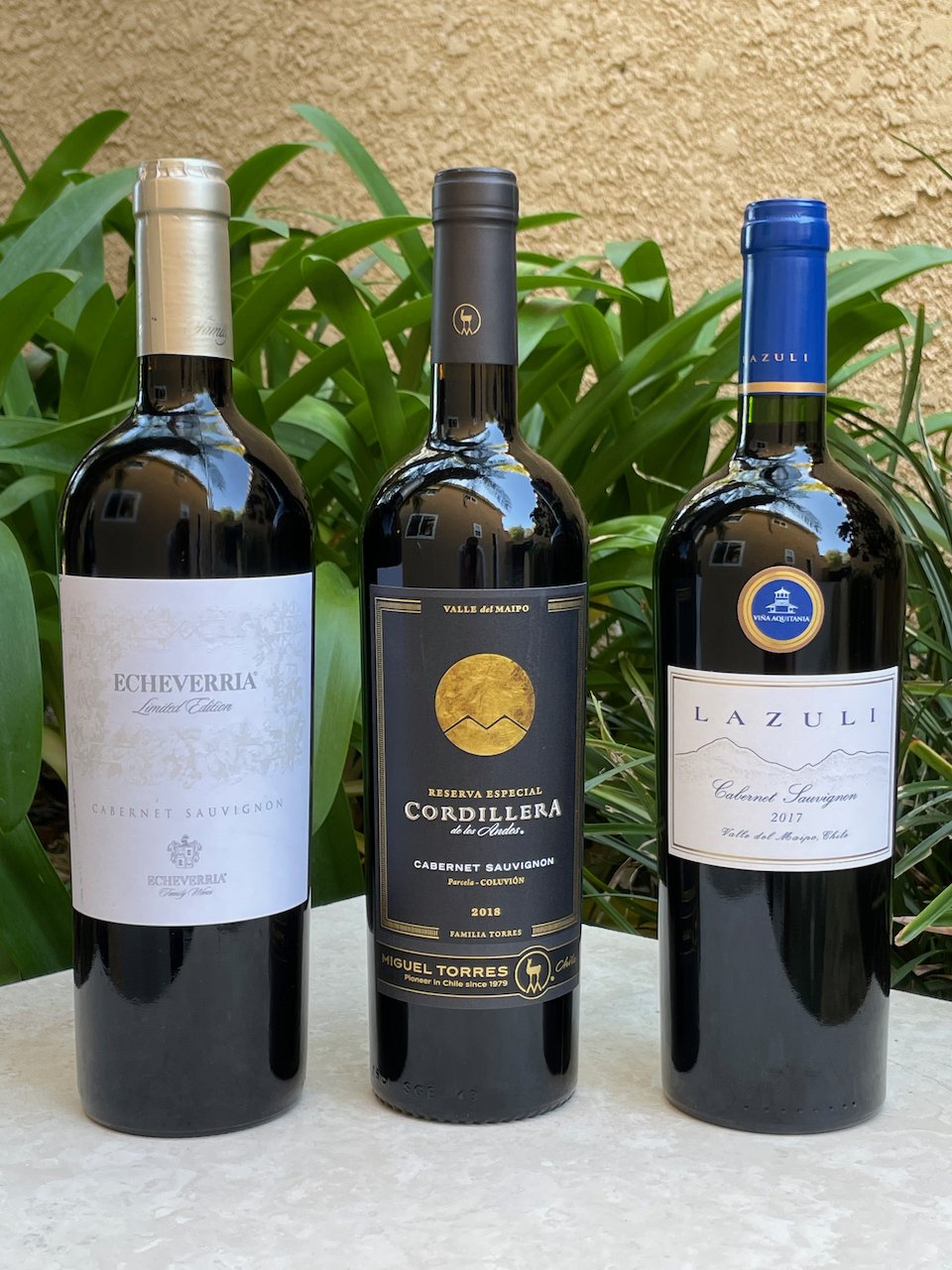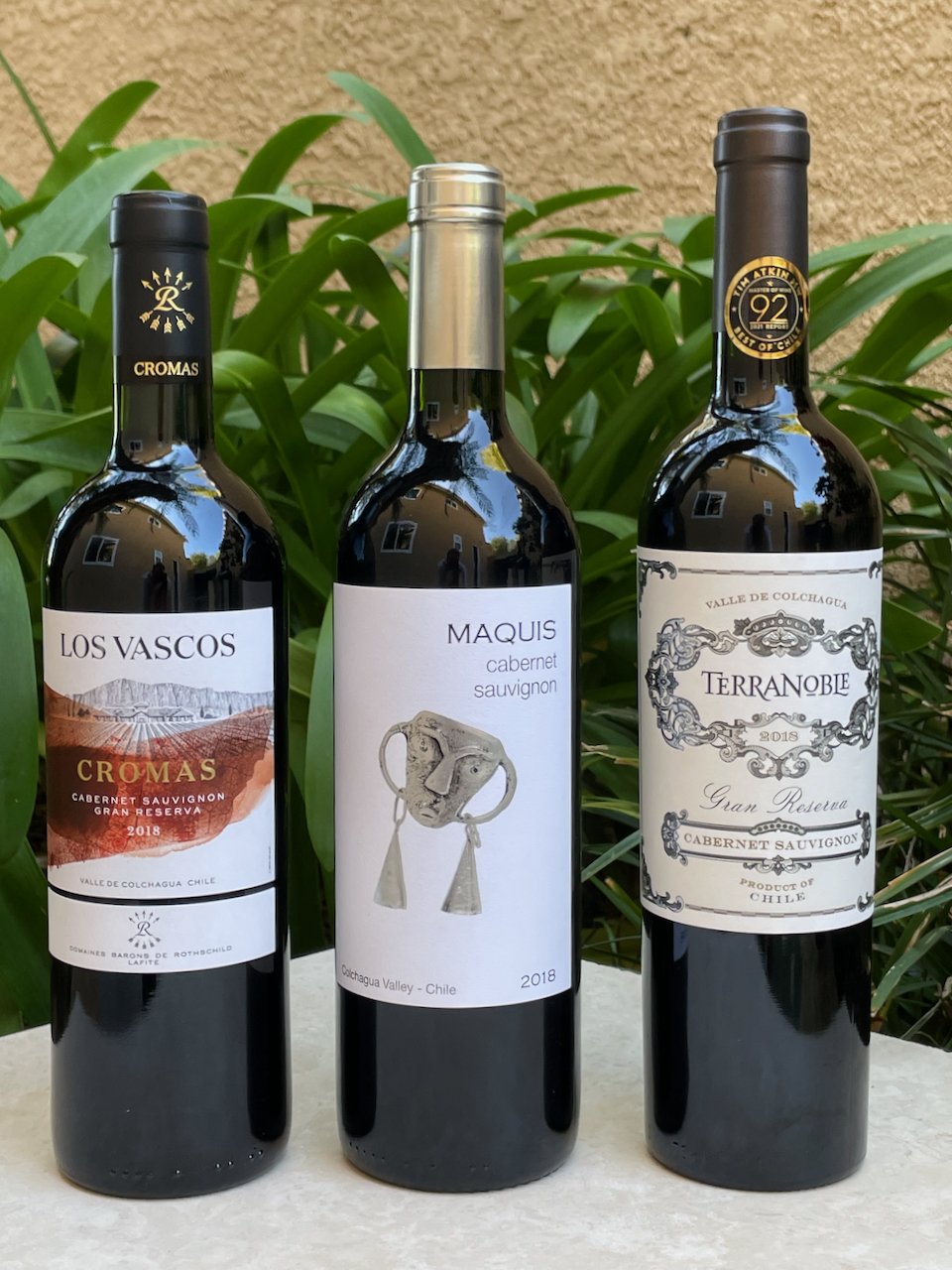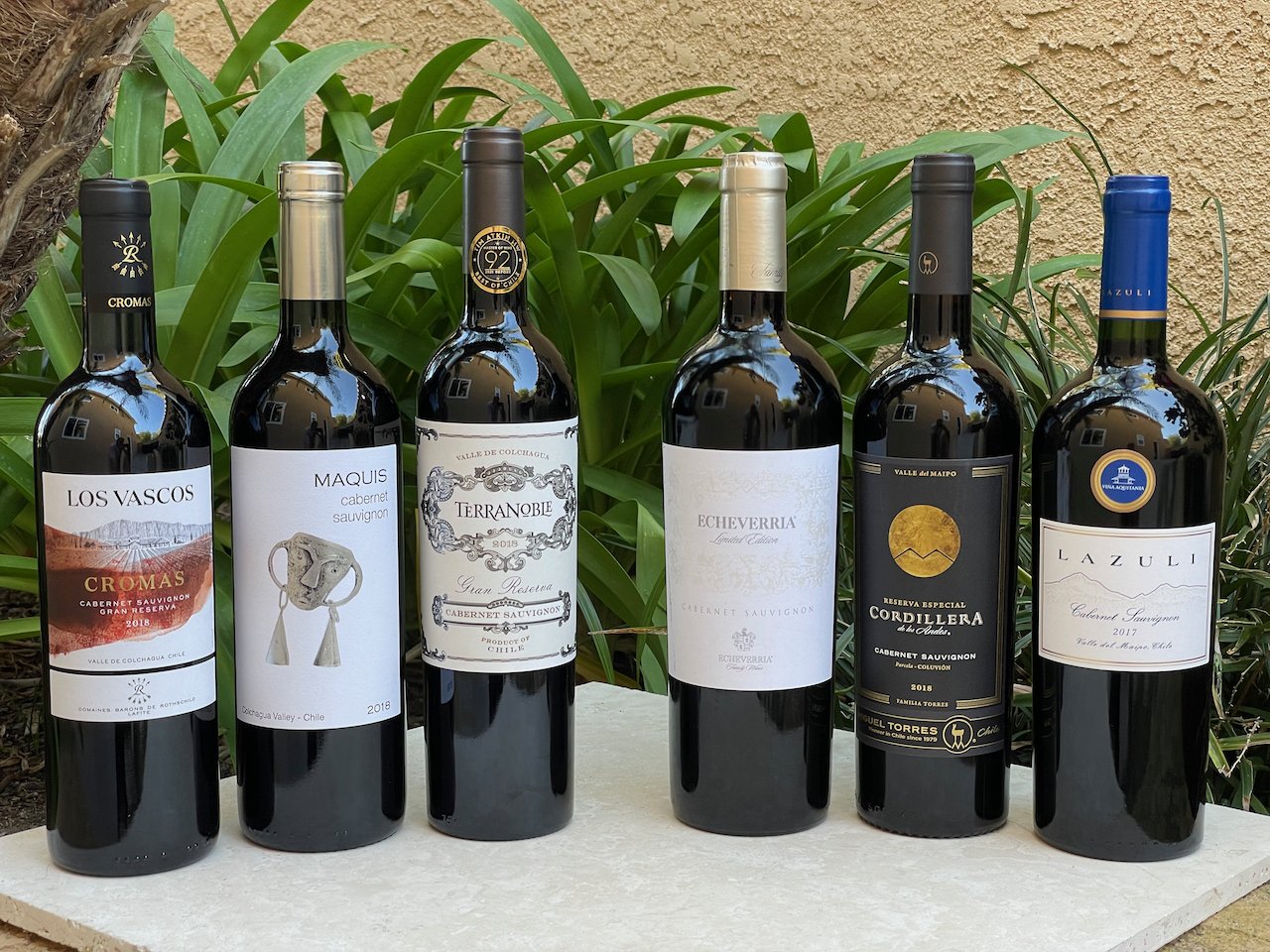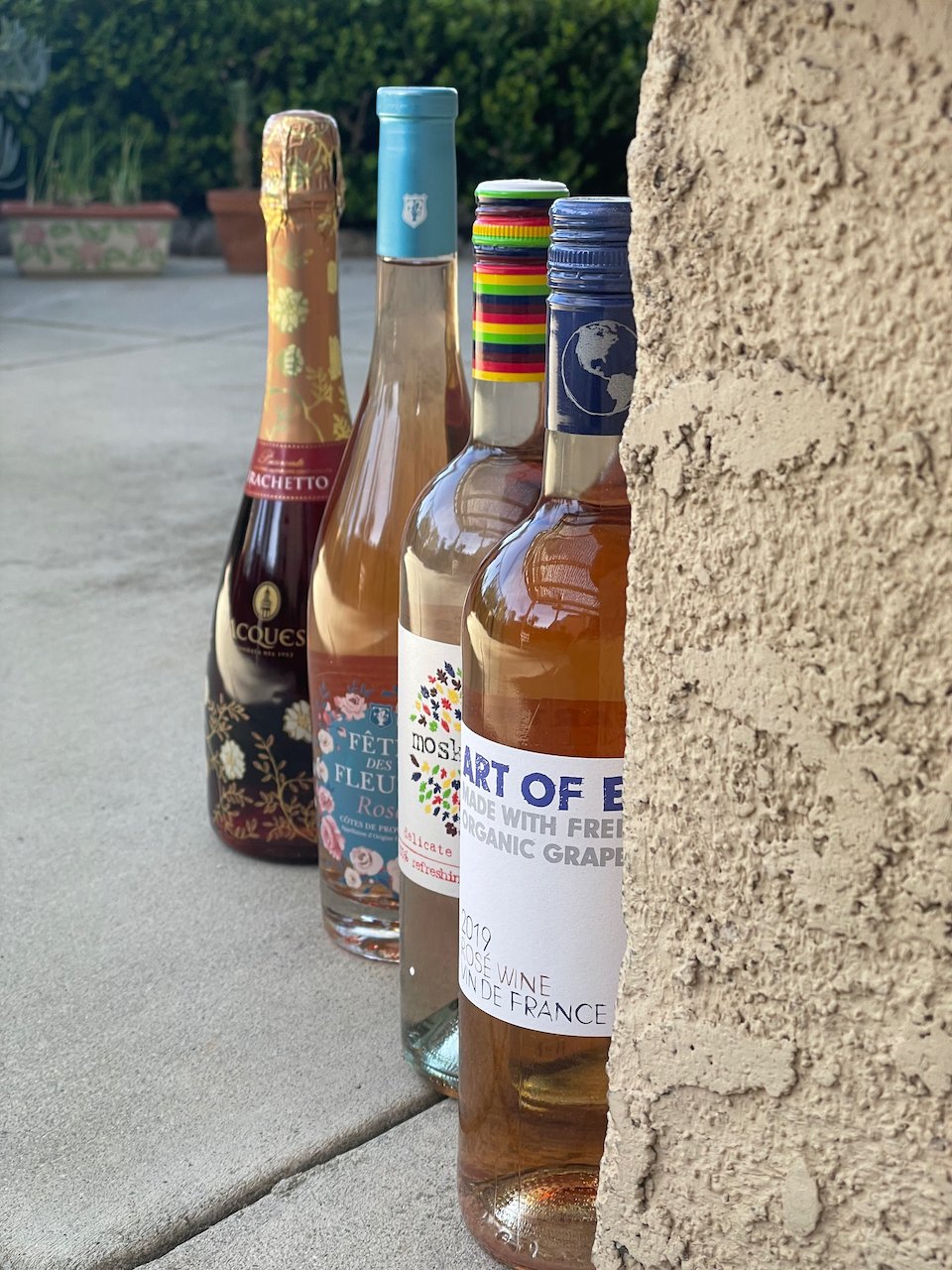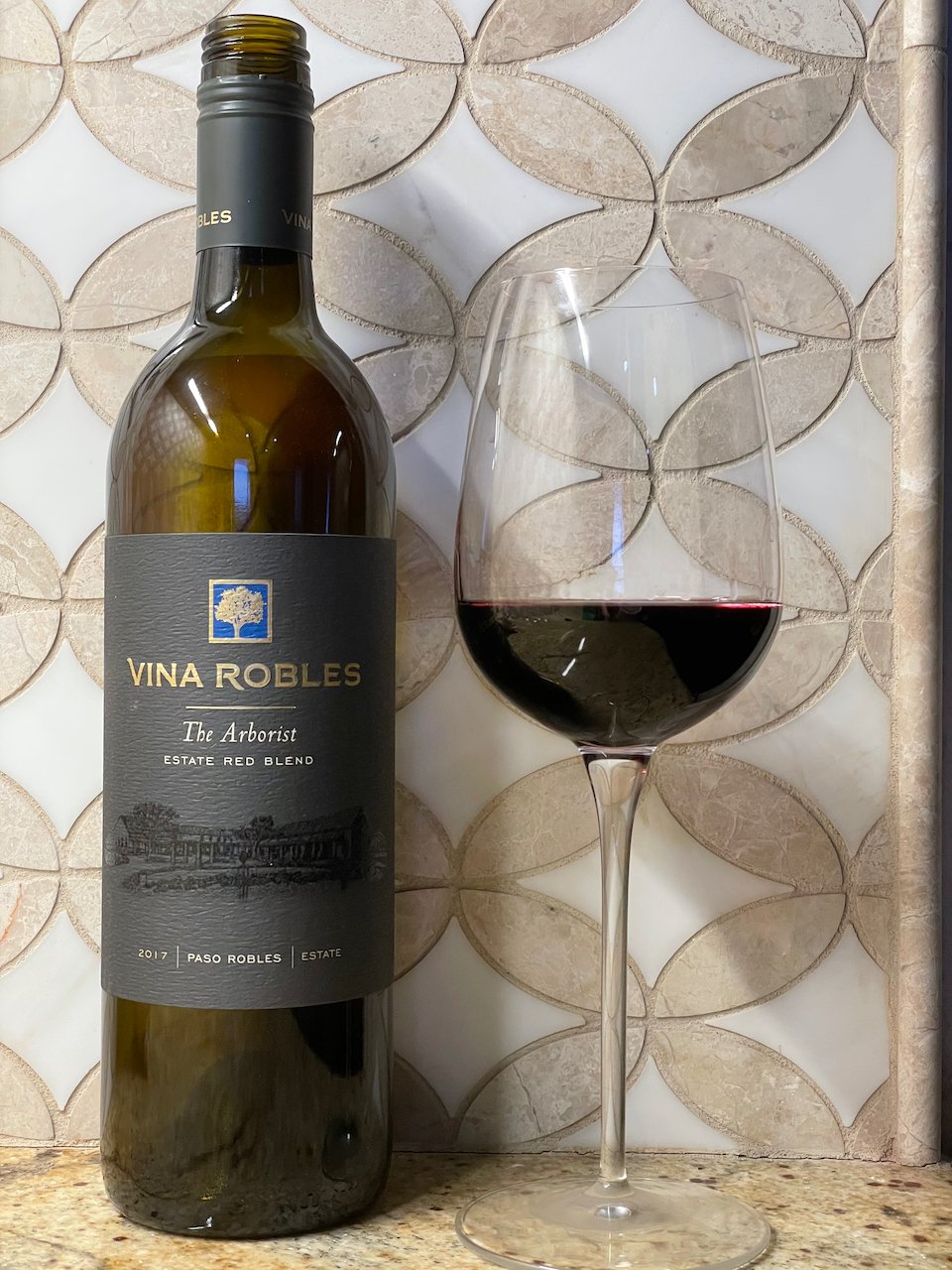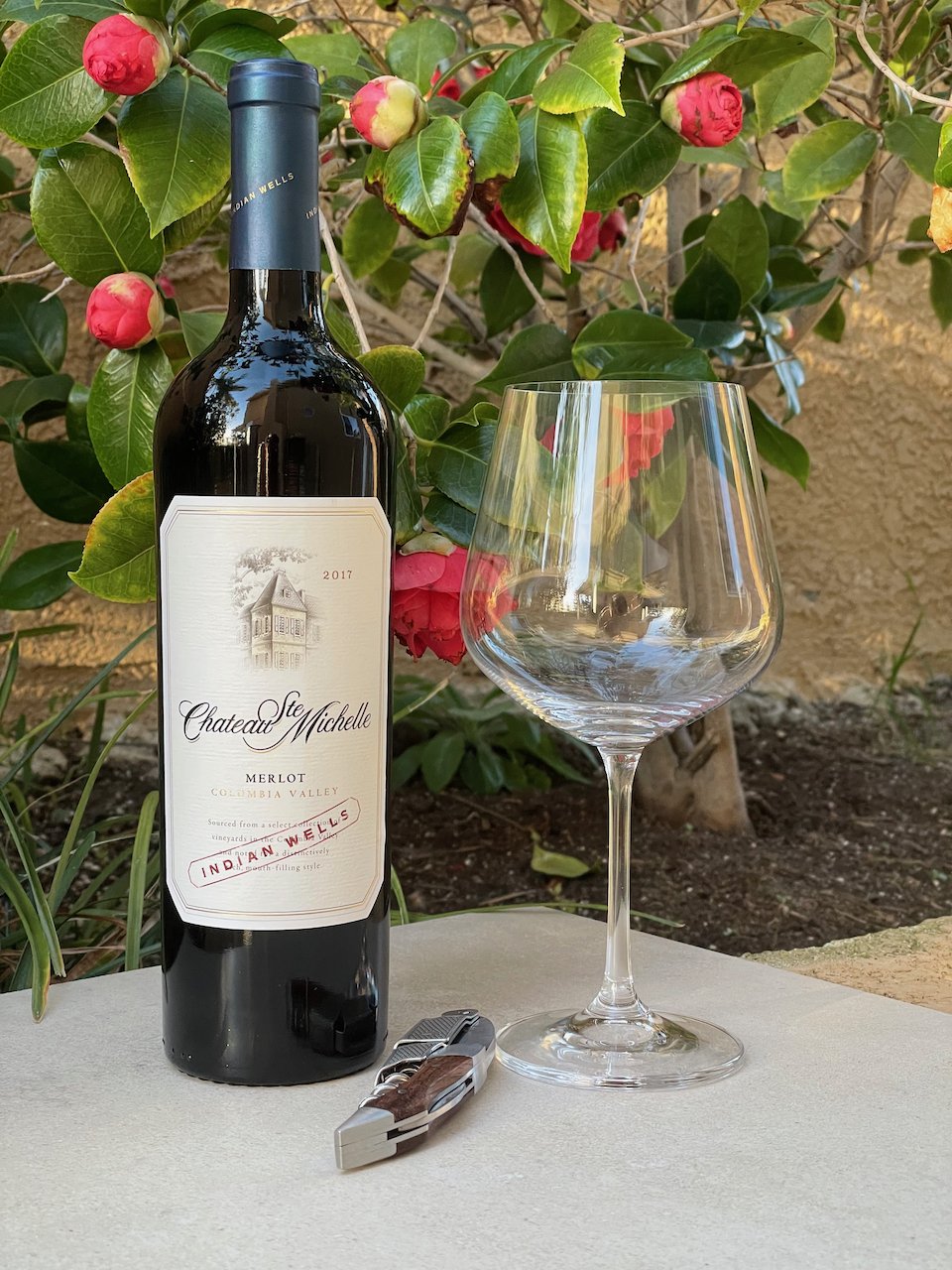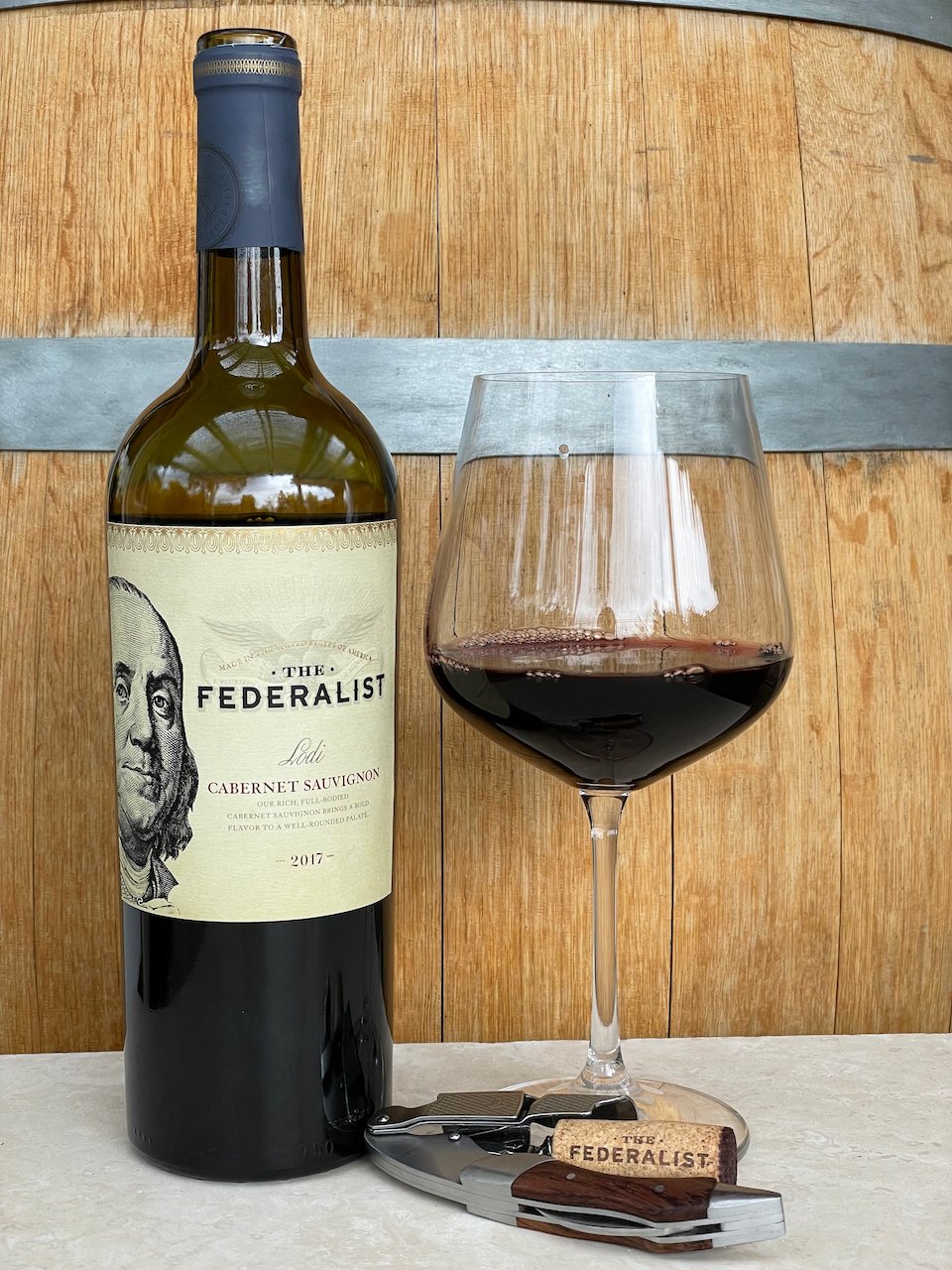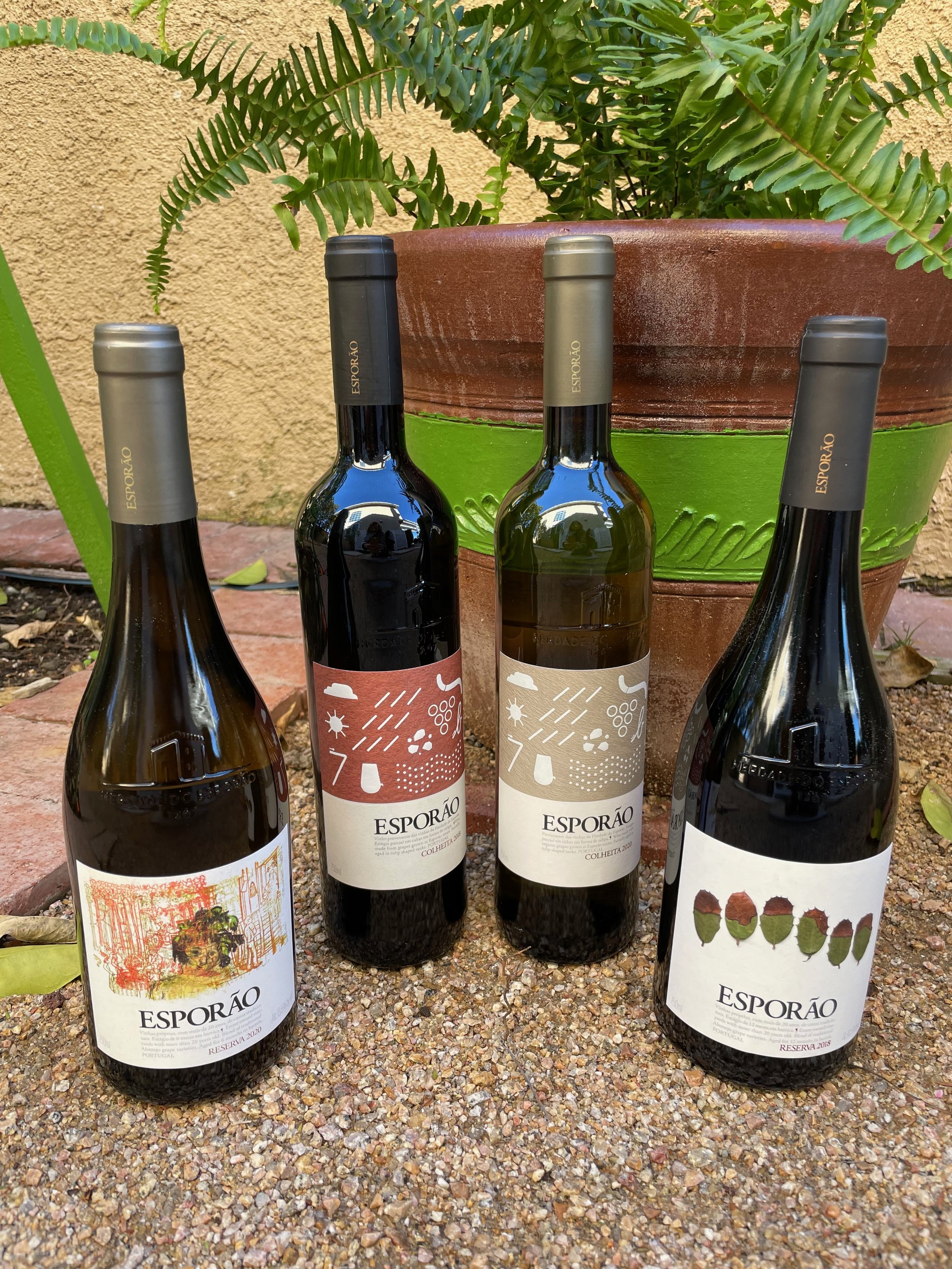2020 Post Flirtation White Blend ($28.99)
Martha Stoumen Wines, producer of Post Flirtation, was founded upon the desire to recapture a farming and winemaking culture of patience.
After 8 years apprenticing around the world, Martha set out as a self-funded, first generation winemaker to answer the question, “What does California taste like?” Their wines are made from unexpected varietals and offer new takes on California classics.
This Post Flirtation White Blend from Sonoma is produced from 75% Colombard, 12% Marsanne, 9% Rousanne and 4% Muscat Blanc. Indeed unexpected! The Marsanne, Roussanne, and Muscat blanc were tumbled in the press to get just a hint of skin contact before pressing, then co-fermented and aged on fine lees in stainless steel. The Vermentino was pressed immediately and fermented separately in stainless steel. The wines were racked, blended, and bottled after six months after malolactic fermentation was complete. It is unfined and unfiltered which results in a slightly hazy appearance.
This Post Flirtation White is a medium gold in color and has a very light spritz (fine bubbles). It has bright fruit aromas of citrus. On the palate it is light and refreshing with bright fruit flavors and good acidity on the finish.
Look for this Behind the Cork™ Wine of the Week on-line and through STOMPY. Cheers.
Disclosure of Wine Sample Submission: I received this sample at no cost for review. The opinions expressed are entirely my own.
Sample Provided by Rebekah Polster 401 West Communications, STOMPY and Martha Stoumen Wines
Red Wines of Maremma Toscana
These red wines from the Maremma Toscana sub-region of Italy’s Tuscany are considered “Super Tuscans” using non-native Italian grapes and/or blends.
Many fine examples of Super Tuscans come from the region of Maremma, on the Tyrrhenian Sea coast in the southwest of Tuscany.
Here are five wonderful examples:
2017 Cantina I Vini di Maremma Sangiovese ($12)
This wine is a blend of “no less than 40% of Sangiovese with other red grapes according the production protocol restrictions” of the region. It was fermented on the skins and aged in concrete tanks. It is medium garnet in color with aromas of black cherry and plum. On the palate it has deep, rich fruit flavors, medium acidity, medium-low tannin and a hint of caramel on the finish.
2016 I Cavallini Pause Merlot ($18)
This wine is produced from 100% Merlot that is hand harvested and undergoes spontaneous fermentation in small barrels with indigenous yeast for four to six weeks. It is then aged sur lie for 12 months in barrels with weekly battonage. It is medium garnet in color with an aroma of black cheery. On the palate it has distinct black cherry flavor with just a hint of tartness on the finish.
2016 Fattoria di Magliano Perenzo Syrah ($23)
This wine in 100% Syrah that is fermented in stainless steel vats for 20 to 25 days. It was aged 12-24 months in medium toasted oak barrels that have a minimum of 24 months seasoning. It is pale ruby in color with a delicate aroma of black fruit. On the palate it has good depth of character and complexity, medium tannin and a nice finish.
2013 Villa Pinciana Terraria ($24)
This wine is a blend of 45% Sangiovese, 45% Cabernet Sauvignon and 10% Petite Verdot. It was fermented in stainless steel tanks and aged for 15 months in small French oak barrels. It is deep garnet in color with aromas of black fruit and spice. On the palate it has flavors of cherry and raspberry, medium tannin and good acidity.
2015 Prelius Prile ($12)
This wine is produced from 40% Cabernet Sauvignon, 40% Sangiovese and 20% Merlot. It was barrel aged in French oak for 18 months. It is medium ruby in color with delicate aromas of black fruit and spices. On the palate it shows sweet red cherry and black fruit flavors, good depth of character, with moderate tannin and acidity.
Disclosure of Wine Sample Submission: I received these samples at no cost for review. The opinions expressed are entirely my own.
Samples Provided by Francesco Mazzei, President of the ‘Consortium for the protection of Maremma Toscana Wines’ (via ZEDCOMM)
Ultraviolet Sparkling Rosé ($24.99)
This Ultraviolet sparkling rosé is from Poe Wines, in Napa, which was founded by Samantha Sheehan in 2009 after being inspired by the wines she tasted in Burgundy and Champagne. Their goal “is not to replicate Burgundy, but rather create alluring, vineyard specific, age-worthy wines revealing the beautiful terroir of California. There is minimal intervention, judicious use of sulfur, and never any additives.”
This sparkling Rosé is made from Pinot Noir grown at Manchester Ridge vineyard in Mendocino Ridge - 2000' above Anderson Valley. It is made in the Charmat method by allowing the still Rosé to ferment a second time in a closed pressurized tank for the bubbles to form.
This Ultraviolet sparkling rosé is a beautiful salmon color with a very delicate nose. On the palate it has wonderful flavors of raspberries and strawberries with a slight citrus note. It has a light sparkle from the fine bubbles, refreshing acidity and a hint of minerality on the finish.
This is a really nice dry sparkling rosé that’s a great fit for Behind the Cork™. Cheers!
Disclosure of Wine Sample Submission: I received this sample at no cost for review. The opinions expressed are entirely my own.
Sample Provided by Rebekah Polster 401 West Communications, STOMPY and Poe Wines
Ciliegiolo Wines of Maremma Toscana
The Ciliegiolo (cheeli-oh-JOL-oh) grape gets its name from an Italian word for cherry, a fruit that is prominent in this wine’s aroma and flavor.
Although traditionally used as a blending grape in Chianti, since around 2000 it has been used to make varietal wines.
Here are four fine examples from Maremma Toscana in Italy (left to right in photo):
2018 I Cavallini Ciliegiolo ($14)
This wine is produced from 100% Ciliegiolo from Manciano. It is fermented with indigenous yeast in stainless steel tanks and aged in large oak barrels for 12 months. It is pale ruby in color with a delicate aroma of black cherries. On the palate it has good acidity, nice cherry flavor and just a bit of tartness.
2018 Cantina I Vini di Maremma Albarese Ciliegiolo ($19)
This 100% Ciliegiolo undergoes fermentation with delayed extraction of its delicate color by means of light punch-down of the cap followed by daily pump-over for the second fermentation. It spends six months wood and concrete vessels. It is medium ruby in color with a delicate aroma and some earthiness on the nose. On the palate it has the distinct cherry flavor, moderate tannin and oak nuances.
2019 Sassotondo Ciliegiolo ($26)
This wine is produced from 100% Ciliegiolo that come from two vineyard in Sovana and Pitigliano. Fermentation takes place without the addition of yeast and last 15 to 20 days before being aged for a few months in steel tanks. It is pale ruby in color with a cherry aroma and some dusty earthiness. On the palate has tart cherry flavor, medium tannin and moderate acidity.
2019 Sequerciani Ciliegiolo ($22)
This is made from 100% Ciliegiolo that is fermented by natural methods with no added yeast and aged in concrete and Terracotta Amphorae. It is pale ruby in color with aromas of black cherry and some herbal notes. On the palate you get cherry and black cherry flavors, moderate tannin, medium-high acidity and a bit of tartness on the finish.
Disclosure of Wine Sample Submission: I received these samples at no cost for review. The opinions expressed are entirely my own.
Samples Provided by Francesco Mazzei, President of the ‘Consortium for the protection of Maremma Toscana Wines’ (via ZEDCOMM)
2019 Alberto Motta Ansonica ($23)
Ansonica (an-so-NIC-ah) may not be a grape variety that you are familiar with. I was not. And, the wine region of Maremma Toscana in Italy may not be a region you are familiar with. But, both are quite interesting.
When researching the Ansonica grape, I learned that it is also known as Inzolia. Again, probably not a grape you are familiar with. As I learned, Ansonica is a white-wine grape that most likely originated in Sicily that likely found its way there from Greece. And, while it is mainly grown in Sicily, it now also appears in some Tuscan whites. But, it is most famous as one of the grape varieties used in the production of Marsala fortified wines.
This Alberto Motta Ansonica is deep gold in color with an extremely delicate aroma. On the palate, it has a richness to it as well as a faint nutty flavor along with light citrus notes and good acidity on the finish. Maybe the best way to describe this wine is somewhat like an un-oaked Chardonnay. But, of course, different.
This was an interesting little journey into an unfamiliar grape. And, an unfamiliar region. So, check out the Maremma Toscana region of Italy (a sub-region of Tuscany) and stay tuned for a couple more Behind the Cork™ blogs on red wines from this up and coming region. Cheers!
Disclosure of Wine Sample Submission: I received this sample at no cost for review. The opinions expressed are entirely my own.
Sample Provided by Francesco Mazzei, President of the ‘Consortium for the protection of Maremma Toscana Wines’ (via ZEDCOMM)
Wines of Alentejo Portugal (Part 2)
Alentejo (ah-len-TAY-zhoo) is one of seven wine regions in Portugal and a real up-and-comer in today’s global wine world.
With its distinct and diverse growing areas, hundreds of unusual grape varieties and ancient wine traditions, Portugal’s Alentejo region is a wine explorer’s paradise.
2018 Aldela de Portalegre Conventual Reserva ($25)
Founded in 1954, the Adega de Portalegre Winery has been distinguished by the quality and originality of their wines. The vineyards are located at an altitude around 2000 feet with the average age of the vineyards being 70 years old.
This wine is produced from 40% Arinto, 20% Fernão Pires, 20% Siria and 20% Bical. It was fermented in stainless steel vats and aged in French and American oak barrels. It is pale gold in color with aromas of citrus fruits, spices and beeswax. On the palate it has bold flavors of lemon and lime, minerality, moderate acidity and a bit of tartness. It is a “Reserva” which is the designation of superior quality for wines that must be certified by the certification body.
2021 Torre de Palma Arinto & Alvarinho ($40)
This wine is produced from 50% Arinto and 50% Alvarinho. It is fermented and aged for six months in used French oak barrels from Burgundy with bâttonage and sur lie. It is pale gold in color with delicate aromas of pear and honey. On the palate it has bold citrus flavors and excellent acidity and salinity with bit of tart pepper on the finish.
2020 Adega de Redondo Porta da Revessa Special Edition White ($15)
Porta da Revessa is inspired by the iconic door of the secular Castelo de Redondo, where the marks of the Vara (a long spiked lance used by a picador) and the Côvado (a unit of measure) are still visible today. This wine is produced from 40% Verdelho, 30% Arinto and 30% Antão Vaz. It is fermented in stainless steel tanks and followed by stirring on lees during the aging process. It is pale yellow in color with aromas of melon, pear, minerals and herbs. On the palate, the aging on lees contributes to a softer mouthfeel with good acidity on the finish.
If you are not familiar with Portugal’s native grapes and the flavors of their white wines, just think of Sauvignon Blanc or Pinot Grigio and you’ll begin to understand their flavors. They are bright and fruity with refreshing acidity that goes great with a wide variety of foods. And, again, perfect to be the Behind the Cork™ Wines of the Week. Cheers!
Disclosure of Wine Sample Submission: I received these samples at no cost for review. The opinions expressed are entirely my own.
Samples Provided by the Wines of Alentejo Sustainability Program and the Noted Wineries of Alentejo via Creative Palate Communications
Wines of Alentejo Portugal (Part 1)
Alentejo (ah-len-TAY-zhoo) is one of seven wine regions in Portugal and a real up-and-comer in today’s global wine world.
With its distinct and diverse growing areas, hundreds of unusual grape varieties and ancient wine traditions, Portugal’s Alentejo region is a wine explorer’s paradise.
2020 Rocim Mariana White ($16)
This wine is from the Vidigueira sub-region of Alentejo which is the southernmost sub-region where the climatic conditions are the most temperate of Alentejo and provide an excellent micro-climate for the production of quality wines.
It is produced with 60% Antão Vaz, 30% Arinto and 10% Alvarinho grapes that were fermented in stainless steel tanks to preserve the bright fruit flavors. It was then aged for five months in stainless steel and two months in the bottle before release. This wine in pale straw in color with delicate tropical fruit aromas. On the palate it has bright citrus flavors of lemon and lime, good acidity and subtle notes of honey.
2021 Herdade do Esporão Colheita Branco ($18)
This wine is produced solely from grapes grown at Herdade do Esporão under organic farming methods. It is produced with Antão Vaz, Viosinho, Alvarinho, Vermentino and other grapes. It was partially fermented in concrete tanks and left on the fine lees for four months. It is pale gold in color with aromas of tropical fruit, pear and honey. This wine has good acidity but having been on lees for four months produces as softer mouthfeel of tropical fruit and melon flavors.
2020 Marques de Borba Colheita ($13)
This wine is produced from 70% Arinto, 15% Antão Vaz and 15% Viognier grape varieties. It is medium gold in color with delicate aromas that include subtle herbal notes. It has bright fruit flavors and refreshing acidity with slightly tart finish.
If you are not familiar with Portugal’s native grapes and the flavors of their white wines, just think of Sauvignon Blanc or Pinot Grigio and you’ll begin to understand their flavors. They are bright and fruity with refreshing acidity that goes great with a wide variety of foods. And perfect to be the Behind the Cork™ Wines of the Week. Cheers!
Disclosure of Wine Sample Submission: I received these samples at no cost for review. The opinions expressed are entirely my own.
Samples Provided by the Wines of Alentejo Sustainability Program and the Noted Wineries of Alentejo via Creative Palate Communications
2019 Ritual Sauvignon Blanc ($20.99)
This organic Sauvignon Blanc is from the Casablanca Valley in Chile. This cool climate area is located on the northwestern side of Chile’s coastal range that is less than 30 km from the Pacific Ocean.
This wine is produced from 100% Sauvignon blanc grapes that are whole-cluster pressed and allowed to sit for 36 hours. It is then divided and fermented in 30% concrete eggs, 30% neutral oak and 40% stainless steel. By doing this, the winemaker is able to create different components each with varying aromatics, flavor and textures. The wine is then aged for eight to ten months with the lees being stirred every other week, based on the fruit days of the bio-dynamic calendar.
This 2019 Ritual Sauvignon Blanc is medium gold in color and has aromas of citrus, tropical fruit and melon. On the palate it has bright fruit flavors of grapefruit and lemon, nice acidity and a smooth mouth-feel due to being aged on lees. The finish is long and refreshing.
This wine from Ritual is not your typical Sauvignon Blanc. The concrete and oak fermentation, along with the time on lees, definitely adds some wonderful texture and smoothness to this wine. Cheers!
Disclosure of Wine Sample Submission: I received this sample at no cost for review. The opinions expressed are entirely my own.
Sample Provided by González Byass (via Donna White Communications)
Wine of Spain
2021 Pazo de Lusco Albariño ($24.99)
This Albariño is from Adega Pazos de Lusco, one of the most renowned wineries of the Rías Baixas wine growing region along the northwestern coast of Spain. The winery boasts a historic 16th century complex that was in used until 2009 featuring a chapel, barn and stables typical of rural life in the Galician history. The winery is now located in new modern facilities that are just steps away from its origin.
This wine is produced from 100% Albariño grapes with native yeasts and aged on lees.
The Pazo del Lusco Albariño is pale gold in color with aromas of lemon, grapefruit and honeydew melon. On the palate it shows bright fruit flavors, some peach, refreshing acidity and finishes with just a hint of saline.
2020 La Miranda Secastilla Garnacha Blanca (14.99)
This La Miranda Garnacha Blanc is from the Secastilla Valley in Spain. The vineyards are located in the north-eastern corner of Spain and have a “Mediterranean microclimate” suitable for growing olives, grape vines and almond trees. The vineyards are set on stony slopes 2300 feet above sea level. There, La Miranda has recovered very old vineyards of Garnacha Tinta and Garnacha Blanca, the traditional varieties of the Secastilla Valley.
This wine is produced from 100% Granacha Blanca (a white grape that is a relative of the red Grenache Noir grape). After fermentation, it was transferred to oak barrels where it remained for four months with frequent batonnage.
The La Miranda Garnacha Blanca is pale gold in color with delicate fruit aromas, along with some earthiness and straw. This one is softer on the palate, with flavors of green apple and herbs, a bit of pepper and good acidity.
Both of these Spanish white wines are from the Gonzalez Byass family of wines and great fits as Behind the Cork™ Wines of the Week. Cheers!
Samples Imported and Provided by Gonzalez Byass (via Donna White Communications)
2021 Domäne Wachau Grüner Veltliner Federspiel Tarrassen ($18.99)
Domäne Wachau is deeply rooted in the Wachau region of Austria and manages 30 percent of the entire Wachau vineyard area (400 hectares), including half of Austria’s most iconic vineyard, Achleiten. Additional famous vineyards such as Kollmitz, Liebenberg and Tausend-Eimer-Berg are found on the Domäne Wachau’s vineyard map and make it the only winery in the Wachau with wines from all of the most prestigious sites in the region.
The grapes for this Grüner Veltliner (grew-ner felt-lee-ner) Federspiel (11.5%-12.5% ABV) Terrassen are from steeply terraced vineyards above the Danube River, throughout the Wachau valley in Austria. It is here that two-thirds of the world’s Grüner Veltliner grapes are grown.
This wine is one of two key styles of Grüner Veltliner wine. It is lighter, fresher and with minerality and citrus character. And, like this one, is often bottled with a slight spritz that helps to emphasize its fresh fruity notes.
This wine is pale gold in color with aromas of green apple and citrus. On the palate, it has bright fruit flavors, very light bubbles, refreshing acidity and wonderfully light finish. This is a dry wine with just 1 g/l of residual sugar.
This is a super refreshing wine that should be well chilled. Cheers!
Samples Imported and Provided by Gonzalez Byass (via Donna White Communications)
Josh Cellars Wines
Josh Cellars is produced by Joseph Carr who named his wines “Josh” for his father.
Josh Cellars is produced as a negociant brand. That means they don’t actually own a winery or any vineyards. At first that might seem odd. But, it’s actually much like some of the world’s greatest chateaux in Bordeaux and Burgundy France.
As a negociant, they work with California’s best growers to acquire grapes from select vineyards in California’s most prestigious appellations––Napa Valley’s Rutherford, Stags Leap District, Oakville, Coombsville, Mt. Veeder, and Carneros AVAs, along with Paso Robles to the south. Then, they allow their winemaker, Wayne Donaldson, to make their wines using his experience of over a decade making sparkling wine at one of the world’s largest and most prestigious champagne house where blending is essential to making great wines.
2021 Josh Cellars Pinot Grigio ($14.99)
This Pinot Grigio is straw color with aromas of pear, cantaloupe and minerals. On the palate it has flavors of green apple with bright acidity and an easy finish. (12.5% ABV)
2020 Josh Cellars Sauvignon Blanc ($14.99)
The Sauvignon Blanc is a pale straw yellow in color with aromas of grapefruit, honeydew and citrus. On the palate it has bright flavors of pineapple and tropical fruit with refreshing acidity that lingers. (13% ABV)
2020 Josh Cellars Chardonnay ($14.99)
This Chardonnay is pale gold in color with aromas of pear and baked apple. On the palate it has bright fruit flavors with a touch of lemon zest. It is balanced with 10% new French oak to add just a hint of oak. This Chardonnay does undergo malolactic conversion to give it a soft mouth-feel but still retains it fruit-forward flavors.
Each of these wines is fermented in stainless steel tanks to maximize the varietal expression, preserve aromas and produce their wines in the signature Josh Cellars style - fruit forward and a long finish. They are affordable and attainable making them a great fit as Behind the Cork™ Wines of the Week. Cheers!
Disclosure of Wine Sample Submission: I received these samples at no cost for review. The opinions expressed are entirely my own.
Samples Provided by Joseph Carr Wines (via Donna White Communications)
Monte Velho Wines
These Monte Velho wines are from Portugal’s Esporão Group. Both are produced from blends of grapes from Portugal’s Alentejo region. This region, in eastern Portugal, covers approximately one-third of the country and is best known for its red wines. But, whites and rosés are rapid-growing segments.
Monte Velho (MON-tay VELL-yo), meaning “old mound,” references a high point on the property, capped by the ancient fort depicted on their labels.
2021 Monte Velho White ($12): This wine is a blend of Alentejo’s unique grapes: 40% Antão Vaz, 20% Perrum, and 40% Roupeiro. Antão Vaz, a full-bodied white, is known for its vibrant tropical fruit flavors while Roupeiro adds citrus notes and acidity. These two big-flavored grapes are softened by Perrum, a grape known as a low-sugar producer. This white blend is pale gold in color with aromas of tropical fruit, green apple and hints of citrus. On the palate it is soft with delicate flavors, medium acidity and a refreshing finish.
2021 Monte Velho Rosé ($12): This wine is the most recent addition to the Monte Velho wines, making its U.S. debut in spring 2022 with the 2021 vintage. It is produced from a combination of red grapes (Touriga Nacional, Aragonez, Syrah, Trincadeira and Tinta Caiada) and white (Arinto). This Monte Velho Rosé is a medium salmon color with aromas of strawberry and citrus notes. On the palate it has flavors of cherry and raspberry, good acidity and a light and refreshing finish. At 1 gm/l of residual sugar and 12.5% ABV, this is a dry wine yet it has sweet fruit flavors.
Both of these wines are certified vegan by the European Vegetarian Union. Being affordable and attainable, these wines are a great fit as Behind the Cork™ Wines of the Week. Cheers!
Disclosure of Wine Sample Submission: I received these samples at no cost for review. The opinions expressed are entirely my own.
Samples Provided by Esporão Group (via Creative Palate Communications)
Le Petit Verre Wines
From the Tupungato Valley of Chile’s Uco Valley comes Le Petit Verre Wines. And, they are imported by Origins Organic which is run by Anne Bousquet of the Domaine Bousquet family winery in Argentina.
Roughly translated as “The Small Glass,” Le Petit Verre wines come in convenient 250 ml cans (1/3 of a bottle) for easy storage and carrying where ever you chose to go.
The grapes for both of these wines are 100% certified organic from Tupungato Valley, a high-altitude sub-zone of Mendoza’s Uco Valley that you may already know for producing great wines, especially Malbec.
Le Petit Verre Bubbly Rosé ($13 for a 4-pack)
This wonderful bubbly is produced from 50% Pinot Noir, 30% Syrah and 10% Viognier. It has a beautiful salmon color, is lightly bubbly with delicious vibrant fruit flavors, good acidity and a refreshing finish.
Le Petit Verre Malbec ($13 for a 4-pack)
Argentina’s Uco valley is famous for its Malbec and this one is produced from 100% Malbec. It’s medium-purple in color, has nice black fruit aromas that follow right into the flavors of this wine with moderate tannin, and a classic tart cherry flavor finish.
Don’t let the can fool you, both the Bubbly Rosé and Malbec are serious wines that can be enjoyed anytime. These wines, made from organic grapes, are a great value and are widely available which makes them a great fit as the Behind the Cork™ Wines of the Week. Look for these and enjoy! Cheers!
Disclosure of Wine Sample Submission: I received these samples at no cost for review. The opinions expressed are entirely my own.
Samples Provided by Origins Organic Imports (via Creative Palate Communications)
Sandy Giovese Vino Rosso ($32)
Amy Ezrin, the founder of Sandy Giovese wines, was training to be an opera singer and lived in Italy for eight years. During this time, she found that she was an OK singer but was really good at speaking Italian and tasting wine. So, she got into the wine business.
She jokes that her alter ego was Sandy Giovese, which is a play on the name of one of Italy’s greatest red grapes, Sangiovese.
This Sandy Giovese Vino Rosso might seem to just be a fun and whimsical box of wine. But, it’s actually a seriously good wine that also happens to be a tremendous value.
Sandy Giovese Vino Rosso is organically farmed and produced from 85% Sangiovese (the grape that is famous for Chianti wine) and 15% Trebbiano.
Vino Rosso is medium ruby in color with jammy aromas of red fruit and herbal notes. On the palate it has the classic Sangiovese flavor of red cherries. It’s medium bodied with medium acidity and finishes light and refreshing.
If you are still on the fence with respect to box wine, here’s your reason to hop off and pick one up! This one is 3 liters of really nice wine for the price of a couple of bottles. And, it’ll last for weeks (if you have enough restraint!). All this make the Sandy Giovese Vino Rosso a great fit as the Behind the Cork™ Wine of the Week.
And, look for Rosie Giovese Vino Rosato (Rosé) also in the 3 liter box! Cheers!
Disclosure of Wine Sample Submission: I received this sample at no cost for review. The opinions expressed are entirely my own.
Sample Provided by Sandy Giovese Wines (via Savona Communications)
2020 Cline Family Ancient Vines Zinfandel ($16)
Fred Cline founded Cline Family Cellars in 1982 in Oakley, California, which is part of Conta Costa County. With this 40th year vintage, they have created the special anniversary bottle design shown in the photo.
The 2020 Ancient Vines Zinfandel draws from their oldest, most historic Zinfandel blocks. There, the soils are deep sand from the banks of the San Joquin and Sacramento River delta’s which have been depositing the sand from the Sierra Nevada mountain range for millennia. Their ancient, dry-farmed vineyards have survived through phylloxera and prohibition and consistently produce great fruit.
The Zinfandel grapes for 2020 vintage underwent near total destemming and a very gentle crushing to ensure a large proportion of whole berries in the must which contributes to the fruit character of the wine. The grapes were fermented in temperature-controlled open-top concrete tanks. The wines were pressed off their skins and aged in 40% French oak for 15 months before being blended and bottled.
This 2020 Cline Family Ancient Vines Zinfandel is deep ruby in color with aromas of black berry and black plum with herbal notes. On the palate it is medium-bodied with flavors of black and red fruits, some spiciness and finishes with sweet tobacco and chocolate.
This 40th anniversary Cline Family Ancient Vines Zinfandel is a great value and widely available, making it a great fit as the Behind the Cork™ wine of the week. Look for this one at your favorite wine seller and check them out on the web at clinecellars.com Cheers!
Disclosure of Wine Sample Submission: I received this sample at no cost for review. The opinions expressed are entirely my own.
Sample Provided by Cline Family Cellars (via Donna White Communications)
2021 Wairau River Sauvignon Blanc ($20.99)
As the weather gets warmer it’s time to start enjoying. Wairau River Wines wants to remind us that while life moves fast, there is always time to unwind, unplug and head outside.
And, what better way to enjoy the outdoors than with a SoloStove, a Primus cutting board and knife, and, of course, a chilled bottle of Wairau River Sauvignon Blanc!
The stainless steel SoloStove is super efficient for burning sustainable fuel sources such as sticks or twigs, and provides hot cooking temperatures in minutes with its 360 degree airflow design. Or use it for roasting marshmallows, or just as a safe and efficient way to have a warming campfire.
The Primus cutting set provides a durable oak cutting board and a stainless steel knife with sheath that wraps up into the poly-cotton transportation roll. A super way of preparing your food for outdoor cooking or just for cheese and crackers while you cook.
Then to top off your outdoor adventure, enjoy a chilled bottle of refreshing Wairau River Sauvignon Blanc. At the edge of the Wairau River in Marlborough New Zealand, Phil and Chris Rose established their vineyard in 1978 and today, with the help of their extended family, they continue to produce some of the best wines that Marlborough has to offer.
This 2021 Wairau River Sauvignon Blanc is medium straw in color and has aromas of citrus and lime. On the palate this 100% Sauvignon Blanc is light-bodied, bright and refreshing with flavors of tropical fruit, guava and pear and finishes clean and dry.
So, get outside and enjoy a warm evening of food and wine with your SoloStove, Primus cutting set and a delicious bottle of Wairau River Sauvignon Blanc. Cheers!
Disclosure of Wine Sample Submission: I received these samples at no cost for review. The opinions expressed are entirely my own.
Samples Provided by Terlato Wines (via Donna White Communications)
Beronia Rioja Wines
With almost five decades of wine making, Bodegas Beronia is renowned for it Rioja. Their flagship winery is located in La Rioja, Spain. It is nestled seamlessly into the hillside, preserving the natural beauty of the landscape. The winery sits beneath a plant-covered roof, partially underground, allowing energy saving through the force of gravity and thermal inertia in the winemaking process. Their winery promotes sustainable architecture and agriculture that minimizes their environmental impact.
Rioja is located in Northern Spain, and is undeniably the most famous Spanish wine region, with a global reputation of trust and quality built over 2000 years of winemaking.
The Beronia winery took its name from the ancient Celts known as the ‘Berones’, the former guardians of today’s La Rioja region.
2017 Beronia Reserva Rioja ($24.99)
In Spain, a “Reserva” wine must have a minimum of three years of aging, with at least one year in barrel and the remainder in bottle. This Rioja Reserva is produced from 93% Tempranillo, 1% Mazuelo and 6% Graciano. This wine spent 18 months in mixed French and American oak barrels and then was left to rest in the bottle for 18 months before being released to the market.
This Beronia Reserva Rioja is medium ruby in color with aromas of black cherry and peppery notes. On the palate it has good black fruit flavors, medium tannin, nice acidity, hints of licorice and a nice finish.
2013 Beronia Gran Reserva Rioja ($29.99)
In Spain, a “Gran Reserva” wines are aged in barrel for two years followed by three years in the bottle prior to release. This Rioja Gran Reserva is also produced from 95% Tempranillo, 1% Mazuelo and 4% Graciano. It spent 27 months in French oak barrels and completed its ageing with another 36 months in the bottle prior to release.
This Beronia Gran Reserva is deep garnet is color with aromas of black cherry and brown sugar. On the palate has flavors of sour cherry and spices while being smooth with its mellow tannin. It has a long and balanced finish.
These Rioja wines from Bodegas Beronia are both excellent. They are attainable and affordable and this a great fit as the Behind the Cork™ Wines of the Week. Cheers!
Disclosure of Wine Sample Submission: I received these samples at no cost for review. The opinions expressed are entirely my own.
Samples Provided by Gonzalez Byass (via Donna White Communications)
Veramonte Organic Wines
Earth Day is Friday April 22nd and here’s a great way to celebrate. Veramonte takes seriously how they produce their 100% organic wine.
Veramonte employs organic farming practices, which are essential for helping the planet and the people. Their wines are naturally free of pesticides, herbicides and synthetic fertilizer. Veramonte is committed to doing what it can to create delicious wine while ensuring optimal conditions for growth and sustainability over time.
Veramonte organic wines are from the Casablanca Valley which is part of the Aconcagua Viticultural region in Chile - a region known for its cool climate due to the coastal influence.
2021 Veramonte Organic Sauvignon Blanc ($13.99)
This wine is produced from 100% Sauvignon Blanc grapes. The grapes go straight from the vineyard to the press where the juice is held for 24 hours. It is then racked and fermented in stainless steel tanks to retain the vibrant, fresh crisp flavor. It has bright aromas of lime and tangerine along with subtle floral notes. Its bright acidity leads to a long and refreshing finish.
2020 Veramonte Organic Chardonnay ($13.99)
This wine is produced from 100% Chardonnay grapes that are whole-cluster pressed to obtain the structure provided by the stems. The juice sits for 24 hours before being racked off. Part of the wine is barrel fermented in neutral oak with wild yeast and the rest is fermented in stainless steel tanks. Thirty percent of the wine undergoes spontaneous malolactic fermentation, enhancing the Chardonnay’s softness and creaminess without losing the freshness. It has aromas of pear, quince and lemon along with notes of toasted oak. It is bright and smooth with a long finish.
2020 Veramonte Organic Carménère ($13.99)
Made from 100% Carménère, these grapes are destemmed and cold macerated for five days in stainless steel tanks before being fermented with native yeast. Following fermentation, the wine is macerated with its skins for another ten days to intensity the flavors. It is then aged for eight months in neutral oak barrels. There are flavors of blackberry and plum with hints of pepper that result in a nice light finish.
Veramonte organic wines are a nice accompaniment for spring and summer foods. With these very affordable prices and availability, the Veramonte wines are a great fit as this week’s Behind the Cork™ Wines of the Week. Cheers to Earth Day on Friday April 22nd!
Disclosure of Wine Sample Submission: I received these samples at no cost for review. The opinions expressed are entirely my own.
Samples Provided by Gonzalez Byass (via Donna White Communications)
2019 Catena Malbec ($15)
World Malbec Day is coming up on Sunday, April 17th, an annual holiday that commemorates the founding of the first agricultural school in Argentina in 1853, which was instrumental in the early cultivation of Malbec in the South American nation. And, here’s a great way to celebrate!
This celebration features the 2019 Catena Malbec and a great book all about Malbec.
The wine is from high-altitude vineyard in Mendoza, Argentina in the foothills of the Andes Mountains.
The book ($24.49 on Amazon) is fun and informative. It is written by Laura Catena and Bodega Catena's oenologist Alejandro Vigil. It tells the story of Malbec, its near extinction, rebirth and in a joyful end, the story of how a plant has elevated the lives of millions of people for over 2,000 years.
This Catena Malbec is produced from 100% Malbec that goes through cold maceration for five days to and then is fermented with wild yeast for 12 days with a post-fermentation maceration of 19-22 days. It then spends 12 months in barrels that are of first, second and third use.
This wine is medium purple in color with aroma of black berry, black cherry, spice and cocoa. On the palate it has nice fruit flavors, medium tannin and medium acidity along with the characteristic easy finish of a Malbec.
At $15 this is a wonderful wine that is fully deserving of being a Behind the Cork™ Wine of the Week. Look for this one and raise a glass for World Malbec Day on April 17th. Cheers!
Disclosure of Wine Sample Submission: I received these samples at no cost for review. The opinions expressed are entirely my own.
Samples Provided by Catena winery (via Nonni Strategic Marketing)
2021 Alavida Malbec ($19)
World Malbec Day is coming up on Sunday, April 17th, an annual holiday that commemorates the founding of the first agricultural school in Argentina in 1853, which was instrumental in the early cultivation of Malbec in the South American nation. And, here’s a great way to celebrate!
This Alavida Malbec is USDA-certified organic and kosher. It’s also vegan, gluten-free and Ecocert-approved. And, it tastes great!
The name Alavida is composed from the Spanish “to life” which is ‘a la vida.’
The grapes for Alavida are grown above 4000 feet in the Andean foothills of the Uco Valley in Argentina. There, daily temperature swings can be up to 60 F resulting in more natural sugar from the hot days and more acidity from the cold nights - a great recipe for wine making!
The winemaking process for Alavida is almost identical to that used in making a non-kosher wine, with two exceptions. Ingredients such as yeast must be kosher, and the wine must be physically made by a sabbath-observant Jewish team under the supervision of a rabbi. For Alavida that means double the number of people involved: a Jewish team member to handle grapes and wine, paired with a home team member standing alongside and directing. For Alavida, that entailed five duos! Winemaker Rodrigo Serrano gave the work orders; his Jewish counterparts executed them.
This Alavida Malbec is medium purple in color with aromas of red fruit, spices, herbal notes and buttery-oak. On the palate have flavors of red fruits and red raspberry, medium tannin, medium-low acidity, some earthiness and hints of the oak on the finish.
Alavida Organic Kosher Malbec is a wonderful wine that is fully deserving of being a Behind the Cork™ Wine of the Week. Look for this one and raise a glass for World Malbec Day on April 17th. Cheers!
Disclosure of Wine Sample Submission: I received this sample at no cost for review. The opinions expressed are entirely my own.
Samples Provided by Origins Organic Imports and Domaine Bousquet (via Creative Palate Communications)
2020 Trivento Reserve Malbec ($11)
World Malbec Day is coming up on Sunday, April 17th, an annual holiday that commemorates the founding of the first agricultural school in Argentina in 1853, which was instrumental in the early cultivation of Malbec in the South American nation. And, here’s a great way to celebrate!
This Trivento Reserve Malbec is from Mendoza’s Bodega Trivento which is tucked away in the towering Andes Mountains of Argentina
The team at Trivento—which means “three winds” in Spanish— sources fruit for the Reserve Malbec from a deliberate mix of new and old vines from two renowned sub-regions in Mendoza: Luján de Cuyo to the north and Valle de Uco to the south.
In Argentina, the term ‘Reserva’ is given to all red wines that have been aged in oak barrels for at least one year.
This Trivento Reserve Malbec is produced from 100% Malbec grapes that are de-stemmed and crushed. Maceration occurs prior to a 20-day fermentation in stainless steel tanks. It then undergoes natural malolactic fermentation before 20% of the wine is aged in French and American oak for six months.
This Trivento Reserve Malbec is deep purple in color with aromas of black cherry and plum. On the palate it has soft tannin, moderate acidity, vanilla and caramel flavors from the oak, and a light finish.
At $11 this is a wonderful wine that is fully deserving of being a Behind the Cork™ Wine of the Week. Look for this one and raise a glass for World Malbec Day on April 17th. Cheers!
Disclosure of Wine Sample Submission: I received this sample at no cost for review. The opinions expressed are entirely my own.
Samples Provided by Trivento (via Jarvis Communications)
Rosés from Mack & Schuhle Wines
Spring is here and warmer days are ahead! Here are some delicious and refreshing Pink wines and a Pink Sparkler. These wines are imported by Mack & Schuhle, a Miami-based national importer (founded in 2012) who is dedicated to bringing exceptional wines from around the world to the US market.
These wonderful rosés are from top wine producing regions such as Cotes De Provence in France and Piemonte Italy. They are made for warm weather drinking, are reasonably priced and distributed nationally.
2020 Fête des Fleurs Rosé ($18.99) - Grown in the diverse and sometimes stoney “galet” soils of Provence and world renowned for the early Rosé wines from indigenous grapes (40% Grenache, 35% Cinsault, 10% Carignan, 10% Syrah, 3% Mourvèdre, 2% Rolle). This Fete des Fleur Rosé is made in the traditional way with characteristics of tart red fruits, brioche and wild berries.
2019 Art of Earth Rosé ($13.99) - From the warm, Mediterranean influenced south of France, this Art of Earth organic Rosé is made from dry farmed old vines (Grenache 70% Syrah 30%) and shows a classic salmon color with fruit tart aromas and flavors.
2019 Mosketto Frizzante Rosato ($12) - Mosketto is the combination of two famous grapes, Moscato and Brachetto, both locally grown in Piedmont and the base for this delicious mildly sweet, naturally bubbly, low alcohol wine. It is made in the same way as the more classic Moscato D’Asti and Brachetto D’Acqui but is stopped from fermenting completely which results in low alcohol and retention of the natural sugars from the grapes.
Acquesi Brachetto DOC ($17.99) - From the world renowned Cuvage winery in Acqui Terme, Acquesi Brachetto (100% Brachetto) is fresh, soft, balanced and long, with a delicate aroma of red fruits and baking spices.
So ‘think pink’ and enjoy the refreshment that rosé wines can offer. Cheers!
Disclosure of Wine Sample Submission: I received these samples at no cost for review. The opinions expressed are entirely my own.
Samples Provided by Mack & Schuhle (via Donna White Communications)
Wines of Chile’s Maipo Valley
Chile’s Maipo Valley is located in the Central Valley near Santiago, and just north of the Colchagua Valley. The Coastal Range separates the Maipo Valley from the Pacific coast on the west and in the east, the Andes Mountains separate Maipo from the Argentinean region of Mendoza.
The first grape vines were planted around Santiago in the 1540s but it wasn't until the 1800s that viticulture really began to expand in Chile.
The Maipo Valley is known for fine wines. It is said that Maipo is known for Cabernet Sauvignons with prominent black fruit flavors, spicy undertones, and bright acidity, while Colchagua Cabernet Sauvignons are more full-bodied with structured tannins.
Here are three fine examples of Cabernet Sauvignon from the Maipo Valley:
2016 Echeverria Limited Edition ($25)
This Echeverria is produced from 85% Cabernet Sauvignon, 10%Syrah and 5% Carménère grapes. It was fermented in stainless steel vats for 8-10 days with an extended skin maceration for additional 10-15 days. It then underwent malolactic fermentation before being aged in French oak barrels for 12 months. The wines were blended and returned to barrels for an additional six months.
This wine is medium ruby in color with light aromas of red fruits and spicy herbal notes. On the palate this wine is medium-to-full bodied with spicy, peppery notes, medium tannin and medium acidity that finishes easy.
2018 Miguel Torres Reserva Especial Cordillera ($25)
The Miguel Torres Reserva Especial Cordillera is from the area of Pirque, a mountainous area of the Maipo Valley. The growing season include the influence of the La Niña phenomenon that resulted in a cooling of the Pacific Ocean, resulting in somewhat lower temperatures than normal prior to harvest.
This Miguel Torres Cordillera is produced from 100% Cabernet Sauvignon grapes. They were fermented in stainless steel tanks for 14 days and then underwent malolactic fermentation in 100% French oak. It was then aged for 12 months in French oak, 20% new and 80% second use, before bottling.
This wine is deep ruby in color with aromas of black cherry and blackberries, with a touch of bell pepper notes. On the palate it is medium bodied with good acidity, moderate tannin and a light finish.
2017 Vina Aquitania Lazuli ($45)
This Vina Aquitania Lazuli Cabernet Sauvignon is produced from 100% Cabernet Sauvignon grapes that range in age from 25 to 30 years old. It was fermented in stainless steel tanks with four days of cold soaking and six days of fermentation with pumpovers. It then underwent six additional days of post-fermentation maceration before malolactic fermentation in barrels. Aging occurred in French oak barrels (30% new) for 16 months.
This wine is medium ruby in color with aromas of black cherry and black fruit with light herbal notes. On the palate it is full-bodied and smooth with low acidity, light tannin and some spiciness on the finish.
Each of these Cabernet Sauvignon wines from Chile’s Maipo Valley are affordable and attainable and fit right in as Behind the Cork™ Wines of the Week. Cheers!
Disclosure of Wine Sample Submission: I received these samples at no cost for review. The opinions expressed are entirely my own.
Samples Provided by the featured wineries of Chile (via Creative Palate)
Wines of Chile’s Colchagua Valley
The Colchagua Valley is located in Chile’s Central Valley and stretches from the coastal hills that run the entire length of Chile's Pacific coastline and to the foothills of the Andes in the east.
Each of these wines is a “Gran Reserva” which, in Chile, means that it is their highest quality wine containing a minimum of 12.5% alcohol and have oak treatment.
The Cabernet Sauvignon of the Colchagua Valley are some of the best wines of Chile’s Central Valley and are available at great values with many in the $20 price range.
Here are three fine examples of Cabernet Sauvignon from the Colchagua Valley:
2018 Los Vascos Cromas Gran Reserva ($22)
Los Vascos is located in a closed valley, approximately 25 miles from the sea. The name, Cromas, was inspired by the colors of nature.
This wine is produced from 85% Cabernet Sauvignon, 10% Syrah and 5% Carménère. After careful sorting and de-steming, grapes are placed in stainless steel tanks for fermentation. Regular pump-over ensure a gentle extraction of the tannins. After malolactic fermentation, 50% of the wine is transferred into French oak barrels for a period of 12 months.
This wine is medium ruby in color with delicate aromas of red cherry and herbal notes. On the palate it is medium bodied with moderate acidity, light tannin and a balanced finish.
2018 Maquis Gran Reserva ($20)
Viña Maquis is located in the heart of the Colchagua Valley between the Tinguiririca River and the Chimbarongo Creek. Both waterways act as pathways for cool coastal breezes that moderate the warm summer temperatures.
This wine is produced from 90% Cabernet Sauvignon, 6% Cabernet Franc, 3% Carmnere and 1% Petit Verdot. The grapes are 100% hand-picked and sorted. Fermentation occurred in stainless steel tanks for 21 days, Malolactic fermentation also occurred in stainless steel tanks. It was then aged for 12 months in French oak.
This Viña Maquis is medium ruby in color with aromas of red cherry and plums. On the palate, this medium-bodied wine has red fruit flavors, medium-low acidity, light tannin and a light, easy finish.
2018 Terra Noble Gran Reserva ($20)
This Terra Noble Cabernet Sauvignon from Colchagua comes from two different terroirs in the valley: 70% of the grapes are from the Los Lingues DO in the Colchagua Andes while the remaining 30% hails from the “Between the Ranges” (Entre Cordilleras) Marchigüe DO. The Los Lingues vineyard is planted in deep colluvial soils with high percentages of clay and stone, while the Marchigüe vineyard is alluvial, sandy and clay-rich. The former is warmer than the latter, where the Pacific breeze lowers the temperature.
This Terra Noble wine is produced from 100% Cabernet Sauvignon.
Fermentation takes place in stainless-steel tanks for a cold maceration of 4 - 6 days. Alcoholic fermentation took place between 25º -26º C with soft extractions by manual punch-downs that were carried out for 8 to 12 days. Then, the wine underwent a post-fermentative maceration of about 2 weeks, depending on the lot. Once the vatting process was finished, 70% of the wine was racked directly into new and used French oak barrels while the remaining 30% was placed in un-toasted foudre (large wooden vats) where it completed the malolactic fermentation. Aging was for 12 months.
This Terra Noble Cabernet Sauvignon is deep ruby in color with aromas of red fruits with herbal hints. On the palate it is smooth with medium-low acidity, moderate tannin and a light finish.
Each of these Cabernet Sauvignon wines from Chile’s Colchagua Valley are affordable and attainable and fit right in as Behind the Cork™ Wines of the Week.
Next time we’ll explore three Cabs from Chile’s Maipo Valley. Cheers!
Disclosure of Wine Sample Submission: I received these samples at no cost for review. The opinions expressed are entirely my own.
Samples Provided by the featured wineries of Chile (via Creative Palate)
Cabernet Sauvignon from Chile’s Maipo Valley and Colchagua Valley
As mentioned last time, Cabernet Sauvignon is the most widely planted red variety in Chile and it is the grape credited with putting Chile on the world stage. It accounts for around 100,000 acres planted which is just over 20% of all vineyard plantings in Chile.
The productive core of Chilean Cabernet Sauvignon is the Central Valley including the Colchagua Valley and the Maipo Valley. And, we’re going to get into comparing and contrasting these two iconic Chilean Cabernet Sauvignon regions with these six wines (as shown left to right):
Colchagua Valley
2018 Los Vascos Cromas Gran Reserva ($22)
2018 Maquis Gran Reserva ($20)
2018 Terra Noble Gran Reserva ($20)
Maipo Valley
2016 Echeverria Limited Edition ($25)
2018 Miguel Torres Reserva Especial Cordillera ($25)
2017 Lazuli ($45)
Watch for up-coming Behind the Cork™ features with full reviews of these wonderful Cabernet’s from Chile!
———————————————————————————————————
Disclosure of Wine Sample Submission: I received these samples at no cost for review. The opinions expressed are entirely my own.
Samples Provided by the featured wineries of Chile (via Creative Palate)
Rosés from Mack & Schuhle
Spring is just around the corner!
We are about three weeks from the start of Spring. That means warmer days ahead. And, it also means rosé season is coming soon too!
Look for these pink wines and pink sparkler in up-coming Behind the Cork™ features!
——————————————————————————————————-
Disclosure of Wine Sample Submission: I received these samples at no cost for review. The opinions expressed are entirely my own.
Samples Provided by Mack & Schuhle via Donna White Communications
2017 Vina Robles The Arborist Red Blend ($18)
The Arborist is dedicated to the founder of Vina Robles, Hans Nef, and named for the arborist who saved the life of the iconic 300+ year-old oak tree featured on the label. Mr. Nef was known for his love of trees; he named the winery for them (Robles is Spanish for oaks), and put an oak tree on the first Vina Robles wine label. That same tree still exists on their label, and in their Jardine Vineyard as well.
Through Vina Roble’s partnership with One Tree Planted, they plant trees with a portion of the proceeds from every bottle of The Arborist that they sell.
The Arborist Red Blend is made mainly of varieties grown in their Huerhuero Vineyard, located directly behind the winery in the rolling hills of Paso Robles. It is produced with a blend of 44% Syrah, 32% Petite Sirah, 18% Grenache and 6% Mourvèdre.
The clusters are cold soaked for two days prior to fermentation. Various pump-over techniques were implemented during progressive stages of fermentation to enhance fruit extraction and balance out the tannin structure. The wine was then aged in both small and large format French, Hungarian and American oak barrels for 18 months
This is a fruit-forward wine with complex flavors, moderate tannin and a nice finish that goes well with most any meal and is wonderful just by the glass.
Vina Robles The Arborist Red Blend is affordable and attainable making it a great fit as the Behind the Cork™ Wine of the Week. Cheers!
2017 Chateau Ste. Michelle Indian Wells Merlot ($18)
Built on the 1912 estate owned by Seattle lumber baron Frederick Stimson, the Chateau Ste. Michelle winery’s roots date back to the Repeal of Prohibition.
With more than 50 years of winemaking, Chateau Ste. Michelle is one of the few premium wineries in the world with two state-of-the-art wineries, one for red and one for white. The whites are made at the Chateau in Woodinville, WA, while the reds are made at the Canoe Ridge Estate winery in Eastern Washington.
The grapes for this wine were sourced from the Indian Wells Vineyard, along with a variety of other warm-climate Washington vineyards that range from the Wahluke Slope to Cold Creek Vineyard.
The 2017 Chateau Ste. Michelle Indian Wells Merlot is produced from 89% Merlot, 10% Syrah, 1% Viognier. The grapes were de-stemmed and sorted. Gentle pump-overs were used to extract optimal flavor and color, and minimize harsh tannins. It was then aged for 18 months in 28% new American and 5% new French oak barrels.
This wine is medium-ruby in color with bright aromas of red and black fruits. On the palate it is a full-bodied, fruit-forward, wine with nice complexity, medium tannin and a lingering finish.
This 2017 Chateau Ste. Michelle Indian Wells Merlot is affordable and attainable, make it a great fit as the Behind the Cork™ Wine of the Week. Cheers!
2017 The Federalist Lodi Cabernet Sauvignon ($17.99)
The Federalist Lodi Cabernet Sauvignon is created to honor the man many call the first American, Benjamin Franklin. Ben Franklin was a passionate man who helped draft the Declaration of Independence and campaigned for colonial unity during the American Revolution.
The Federalist wines are from Terlato wines that has a global portfolio of more than 70 brands from world class wine producers in more than a dozen countries.
This 2017 Lodi Cabernet Sauvignon is produced with multiple grape varietals including Cabernet Sauvignon, Merlot, Cabernet Franc, Petite Syrah, Sangiovese. The different blocks were fermented separately to preserve the characteristics of each. Each block then spent an average of 18 days on the skins. It was then aged for 15 months in oak (34% new oak).
The Federalist Cabernet Sauvignon is medium ruby in color with nice aromas of dark fruit. On the palate it is full-bodied, fruit-forward with medium tannin, subtle oak influences and an easy finish.
The Federalist Lodi Cabernet Sauvignon can be found in most stores, wine shops and on-line. It is attainable and affordable making it a great fit as the Behind the Cork™ Wine of the Week. Cheers!
Disclosure of Wine Sample Submission: I received this sample at no cost for review. The opinions expressed are entirely my own.
Samples Provided by Terlato Wines via Donna White Communications
Wines of Esporão
Herdade do Esporão is located in southern Portugal’s Alentejo’s region and the largest wine producer in the region. Esporão is also the region’s most widely distributed winery in the U.S. and a driving force behind the revitalization of Alentejo wine industry in the past 30 years. In 2019 they joined the ranks of the world’s largest producers of certified organic wines. And, their intent is to become the largest before too long.
2018 Esporão Colcheita Red ($18)
Colcheita Red wine is made solely from grapes grown at Herdade do Esporão, utilizing organic farming methods. It’s produced from five grape varietals - Alicante Bouschet, Touriga Nacional, Aragonez, Cabernet Sauvignon, and Touriga Franca. It is co-fermented at controlled temperatures (22 to 25ºC) and finished in concrete tanks. Following malolactic fermentation, aging took place in the same concrete tanks for six months.
This Colheita Red is ruby red in color with aromas of ripe black fruit, plums and cocoa, with touches of spice. On the palate it has a silky texture, where ripe fruit flavors dominate and includes mineral touches that lead to an easy finish.
2018 Esporão Reserva Red ($25)
It is produced from seven varietals - Alicante Bouschet, Touriga Nacional, Aragonez, Syrah, Trincadeira, Cabernet Sauvignon, and Touriga Franca. Fermentation occurred in stainless steel vats, concrete tanks and small marble basins and was followed by malolactic fermentation in stainless steel tanks. It then spent 12 months in American (60%) and French (40%) oak barrels. After bottling, the wine aged 8 months in the bottle.
Esporão Reserva Red is ruby red in color with aromas of black fruit jam with spices (black pepper, cloves) combined with notes of coffee berries and cigars. On the palate it is complex with notes of spices and dark chocolate and a long finish.
2020 Esporão Reserva White 2020 ($20)
This Reserva White from Esporão is produced from Antão Vaz, Arinto, and Roupeiro grapes. It underwent temperature-controlled fermentation with 70% of the batch in stainless steel tanks and the other 30% in new American and French oak barrels. It then spent six months in stainless steel tanks and in new American and French oak barrels, with aging on lees.
This wine is light straw in color with green hues. Aromas include grapefruit and white peach with subtle notes of mint, white pepper and nutmeg. On the palate it is creamy with balanced fruit and spices. It is intense in flavor and finishes strong.
2020 Esporão Colheita White ($18)
This Esporão Colheita White is produced from Antão Vaz, Viosinho grapes that were partially fermented in concrete tanks. After fermentation, the wine was left on lees for four months.
This wine is straw color with green hues. It has aromas of citrus, grapefruit, tropical fruit and notes of green leaf. On the palate it is slightly creamy in texture, balanced with a fresh, rich and persistent finish.
———————————————————————————————————
Disclosure of Wine Sample Submission: I received these samples at no cost for review. The opinions expressed are entirely my own.
Samples Provided by Herdade do Esporão via Creative Palate Communications

